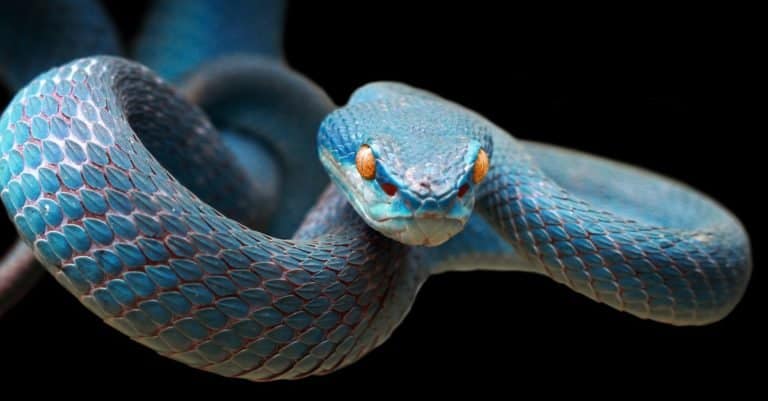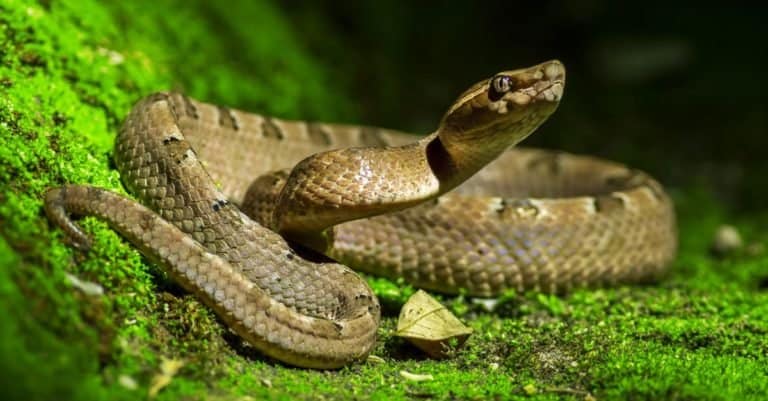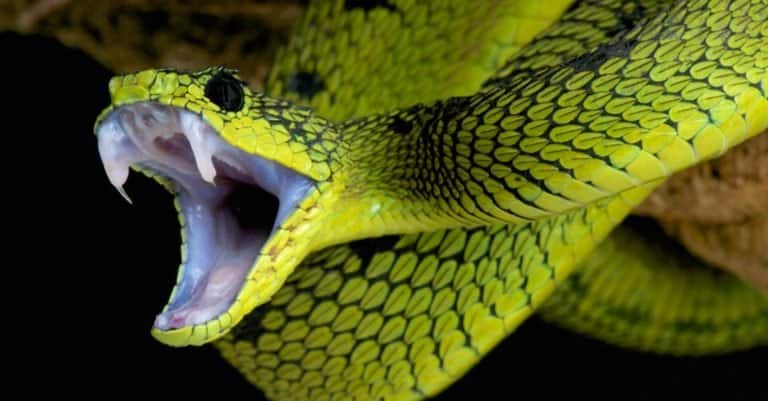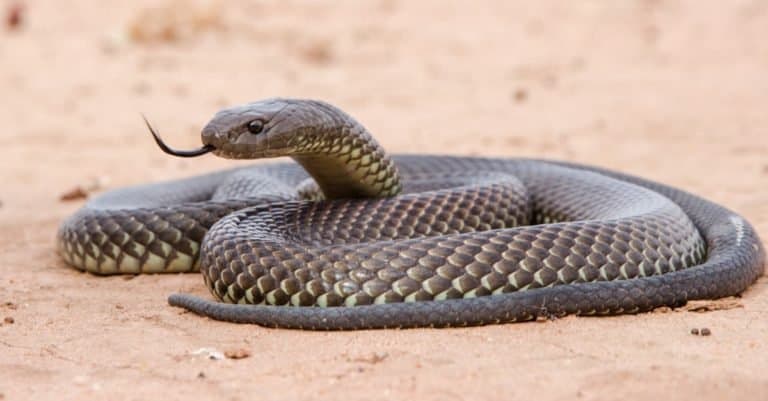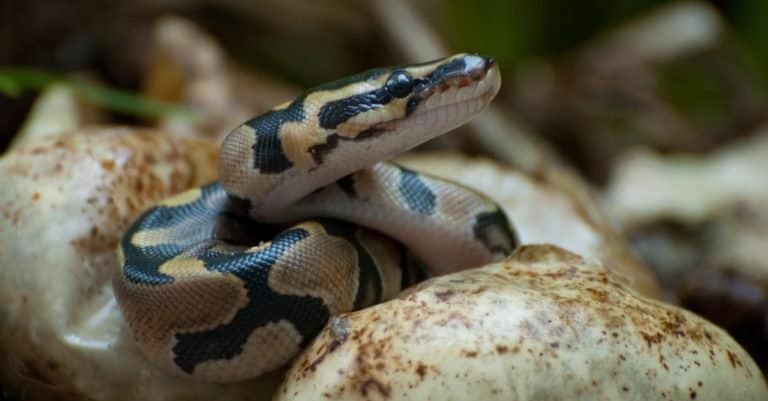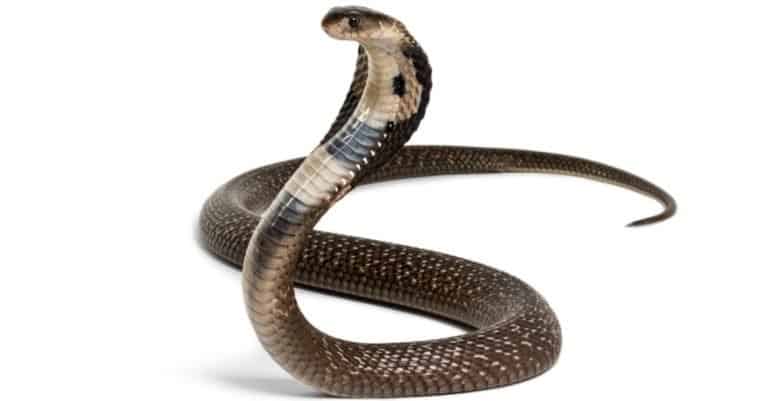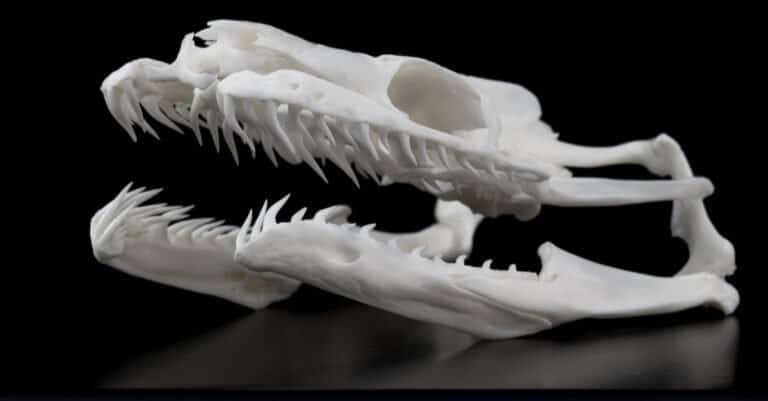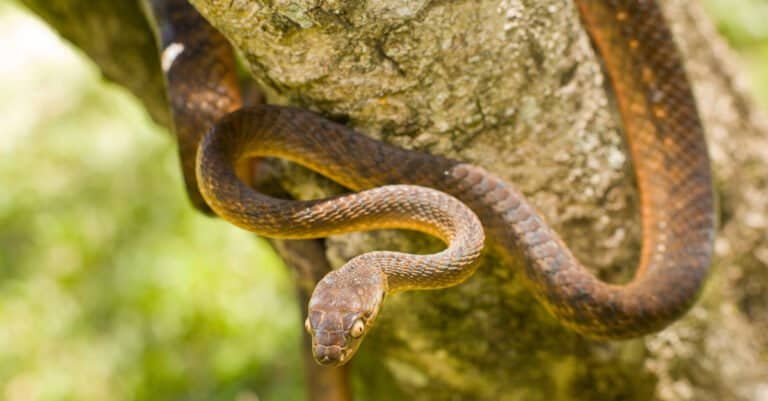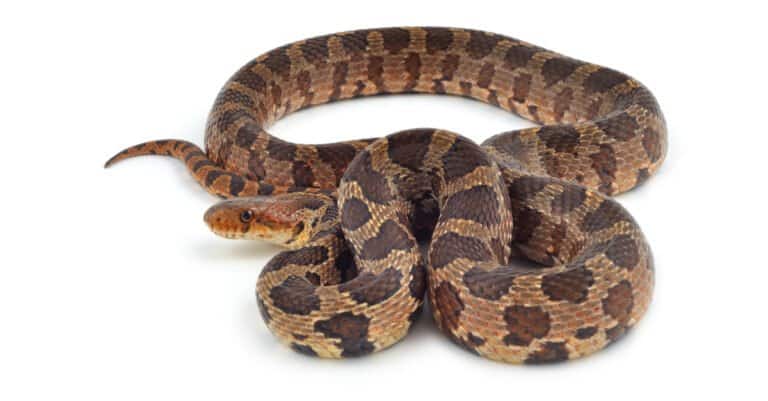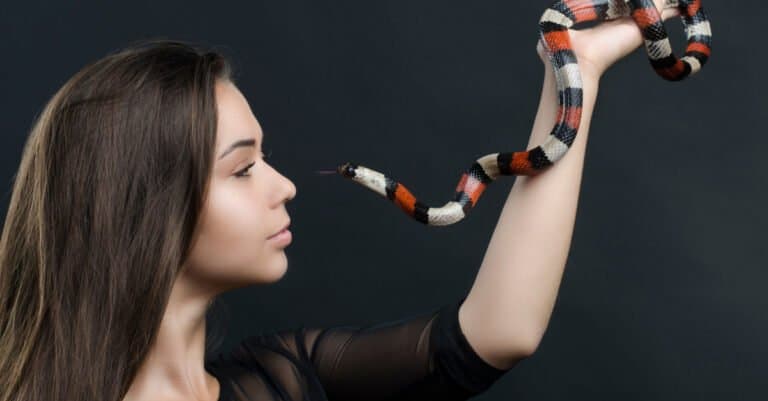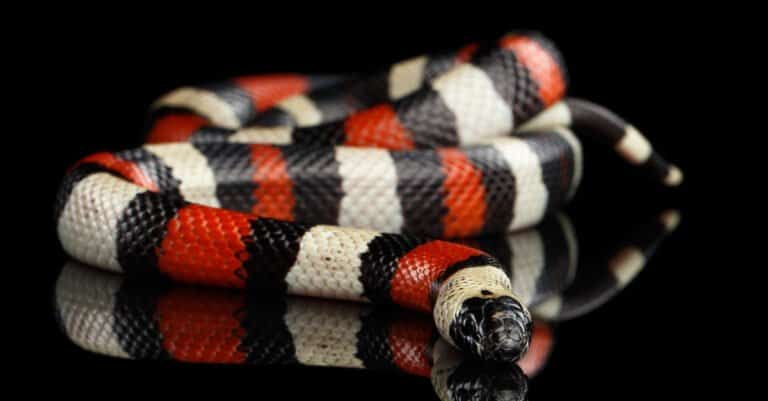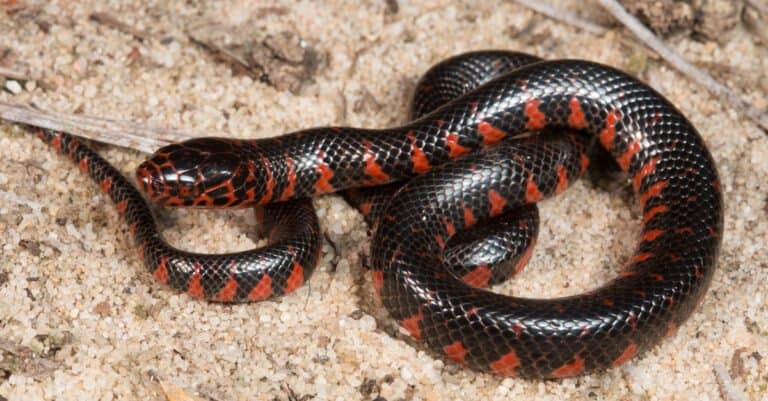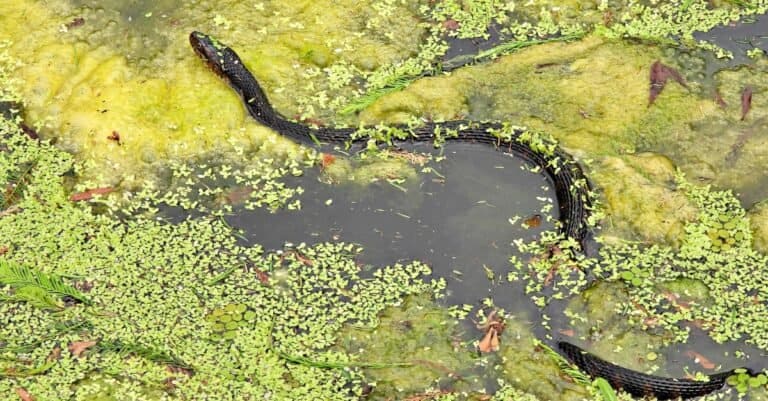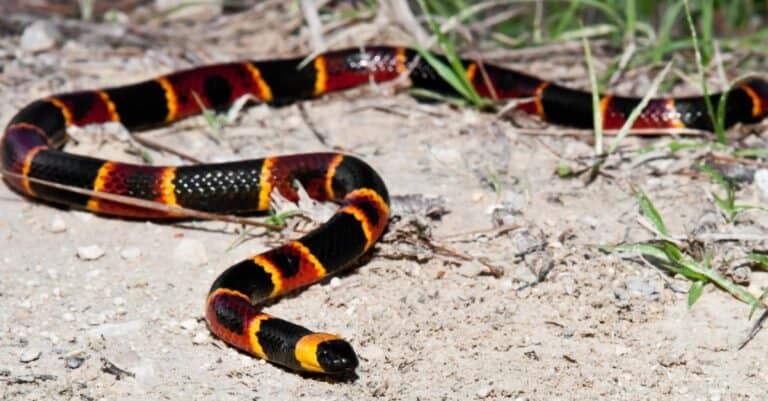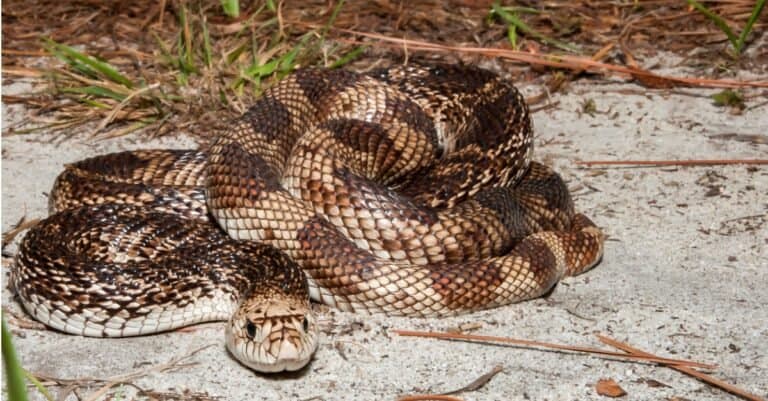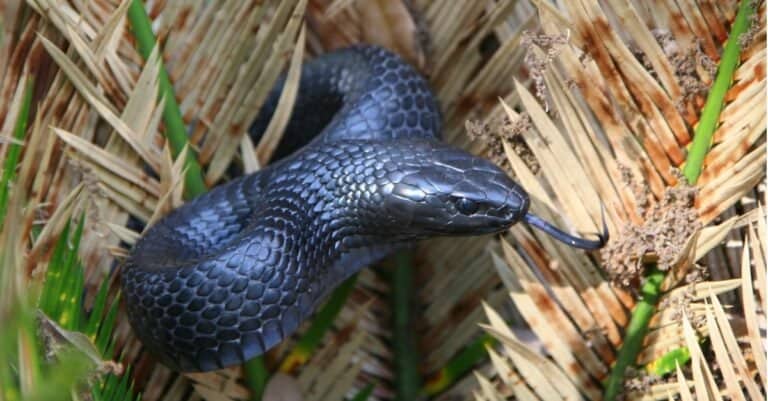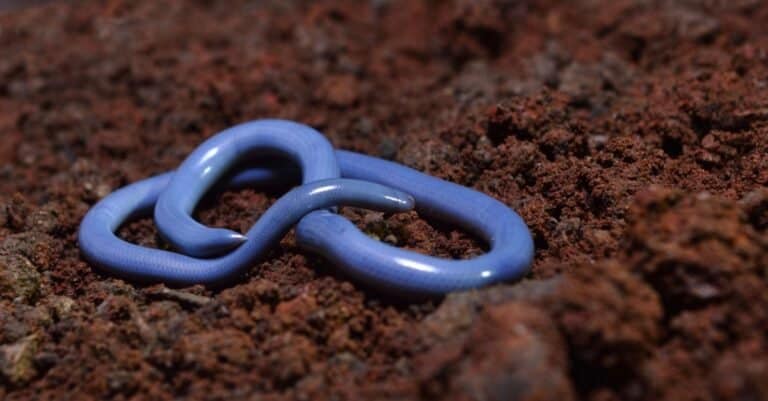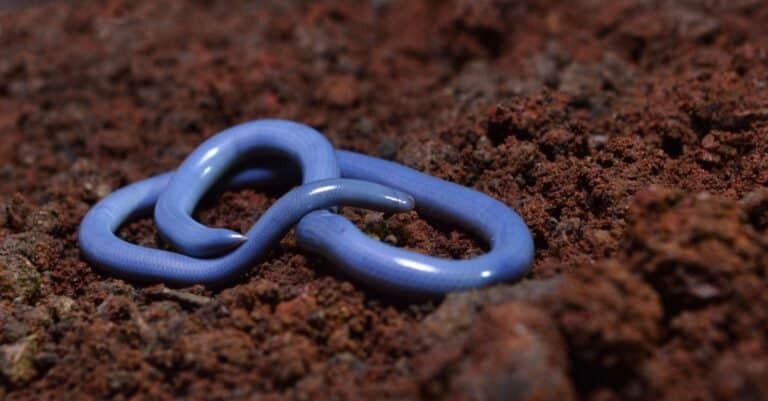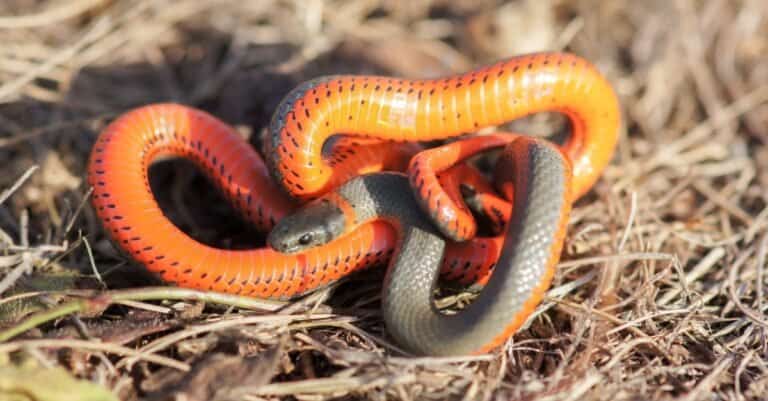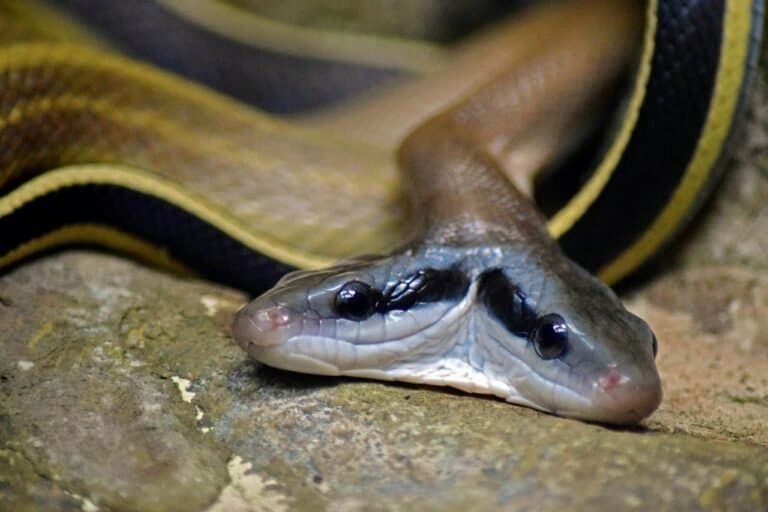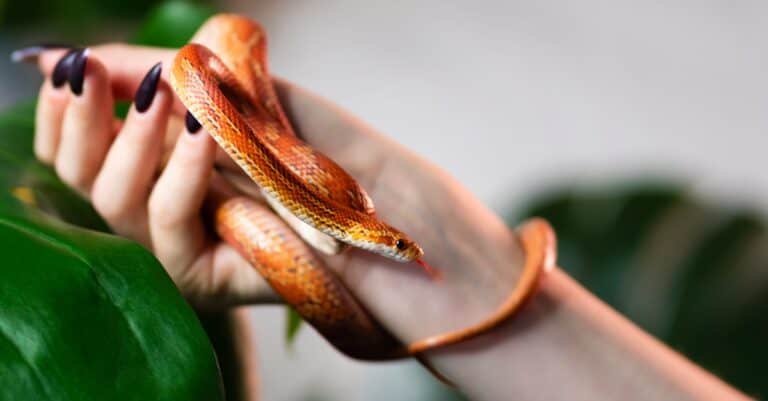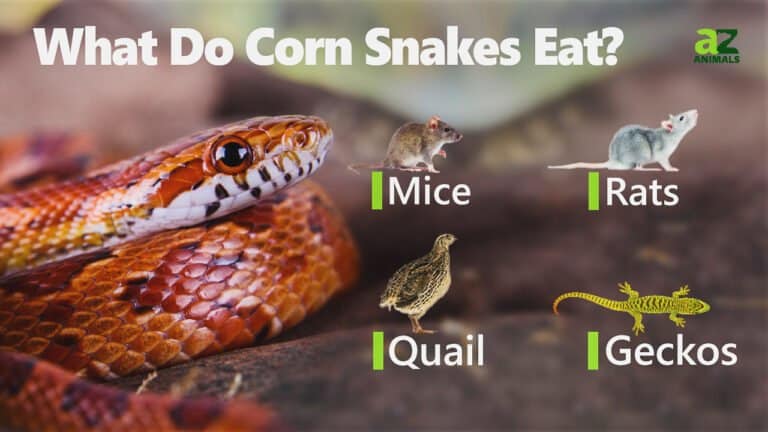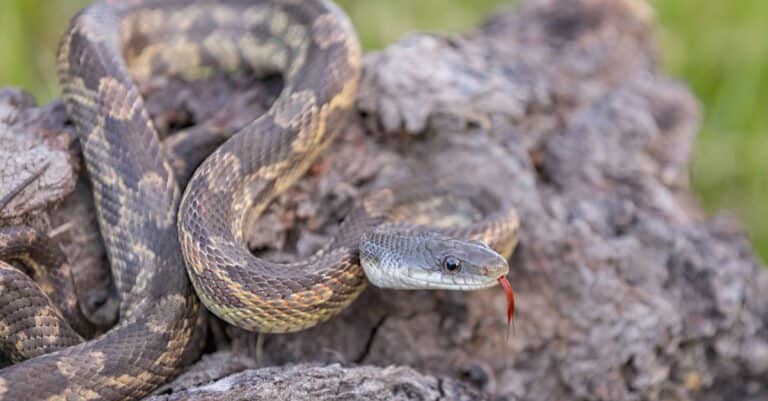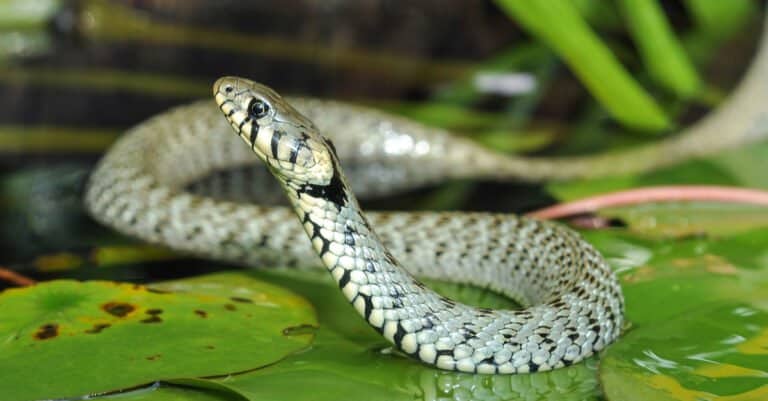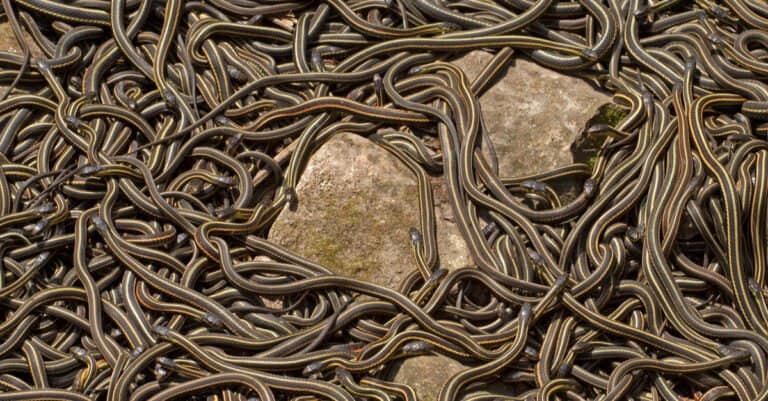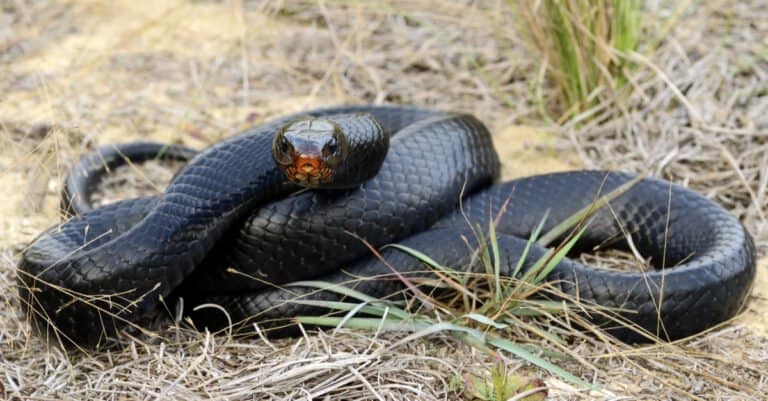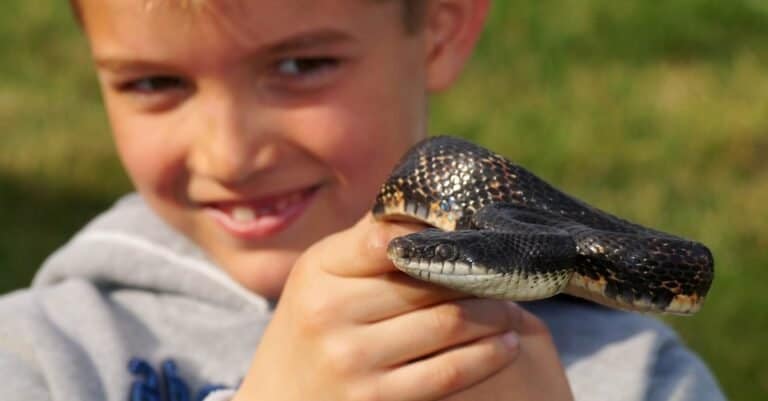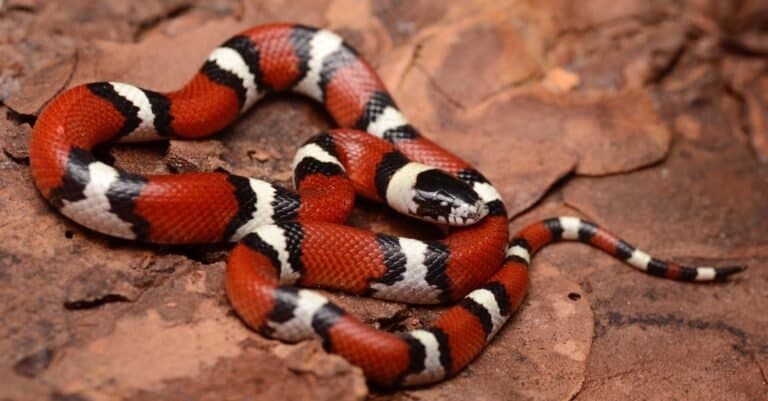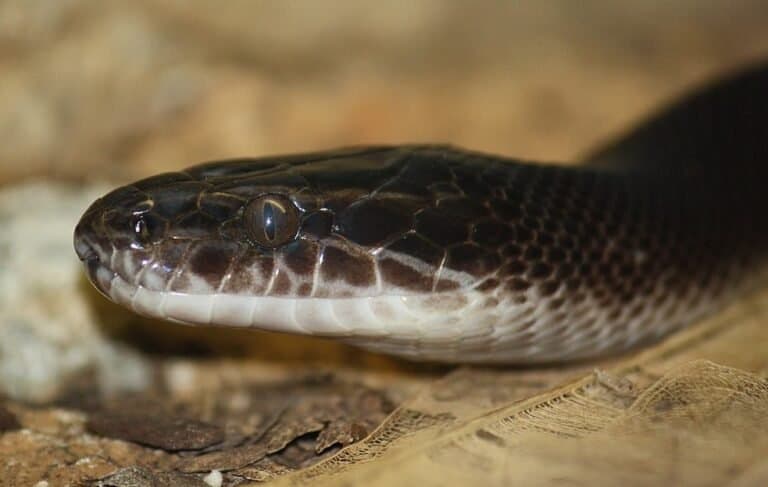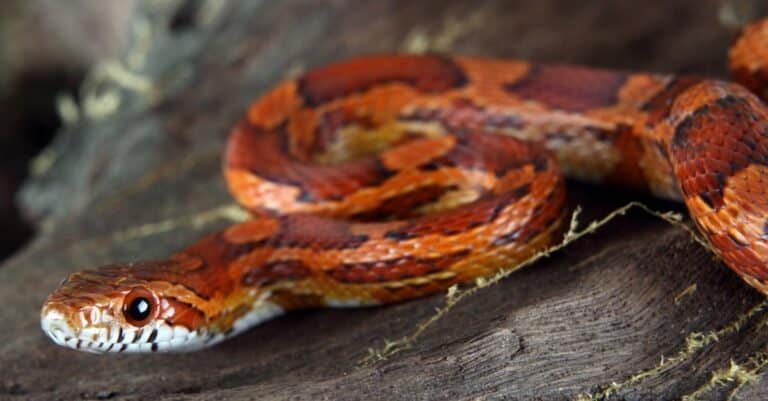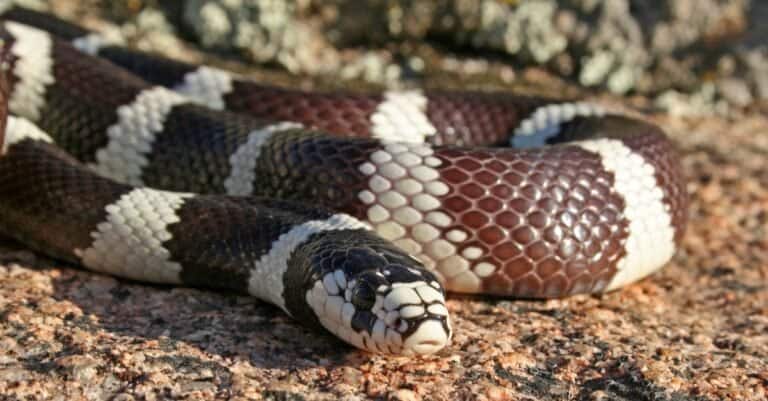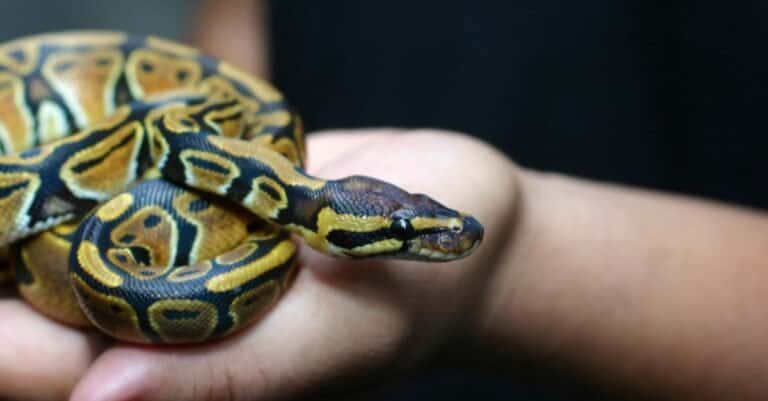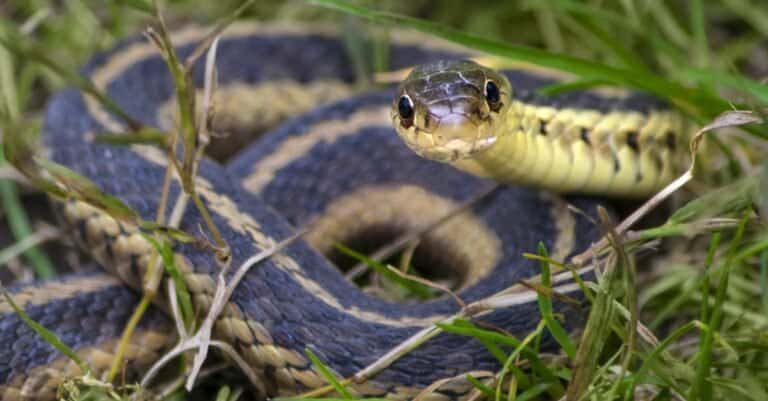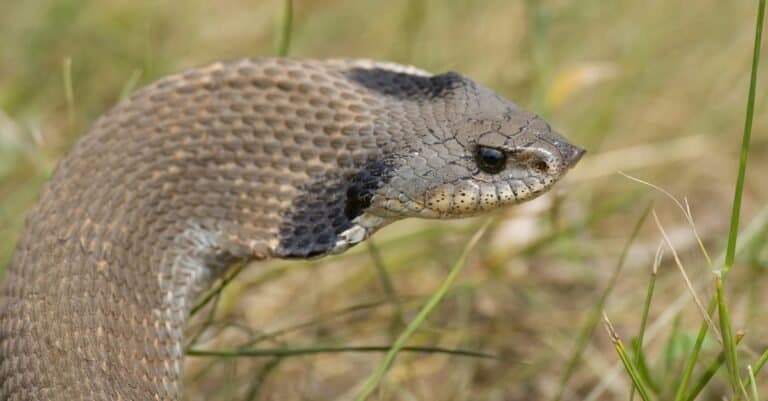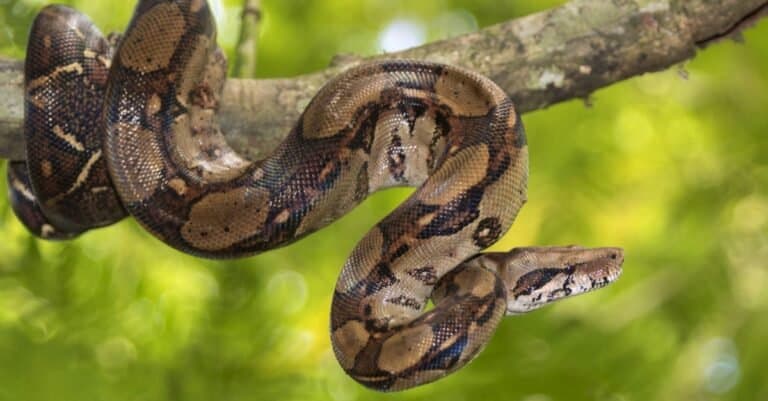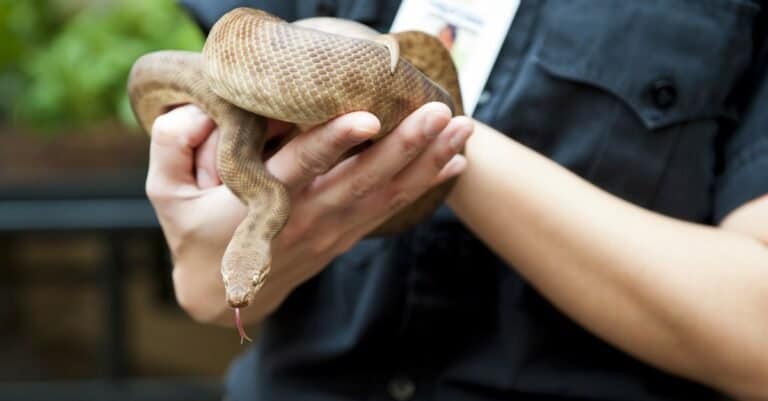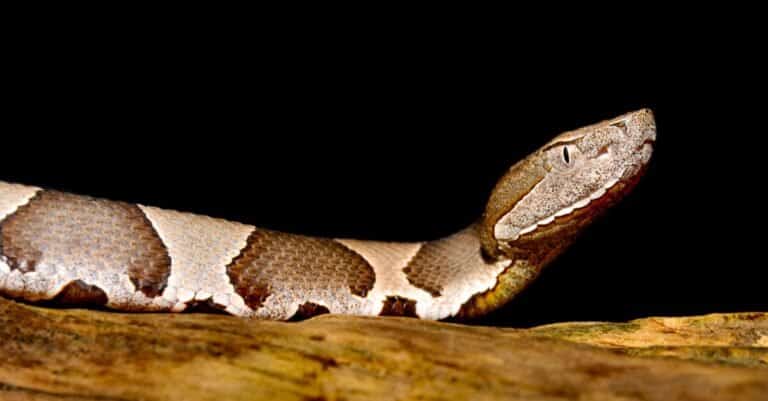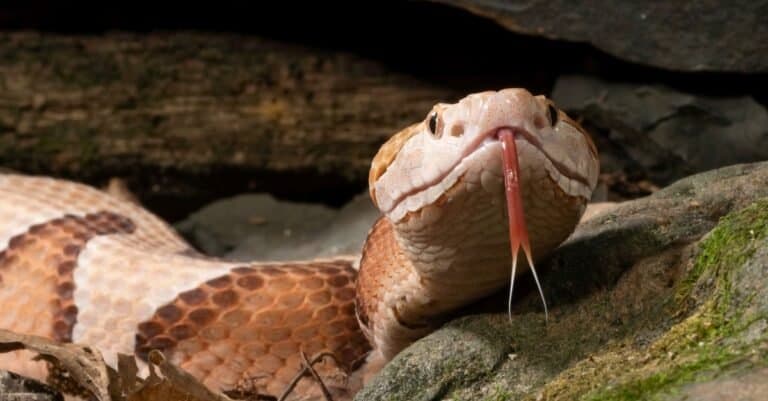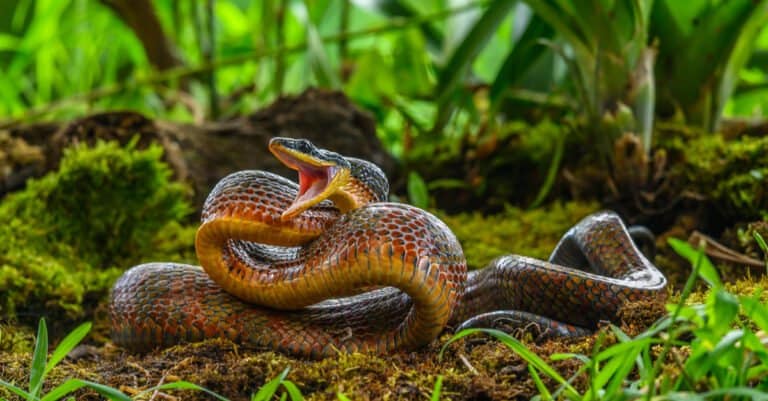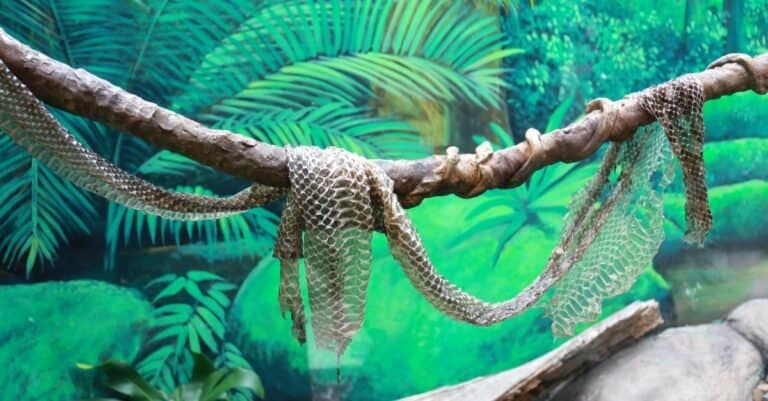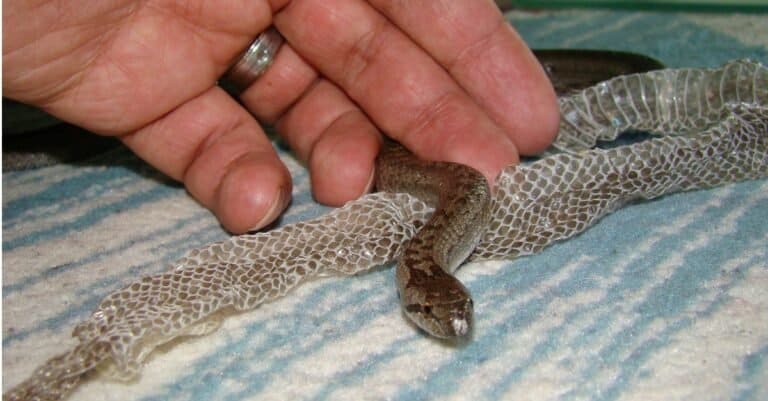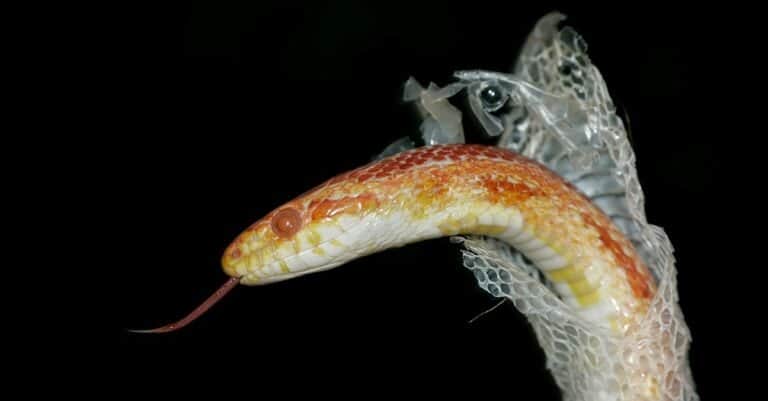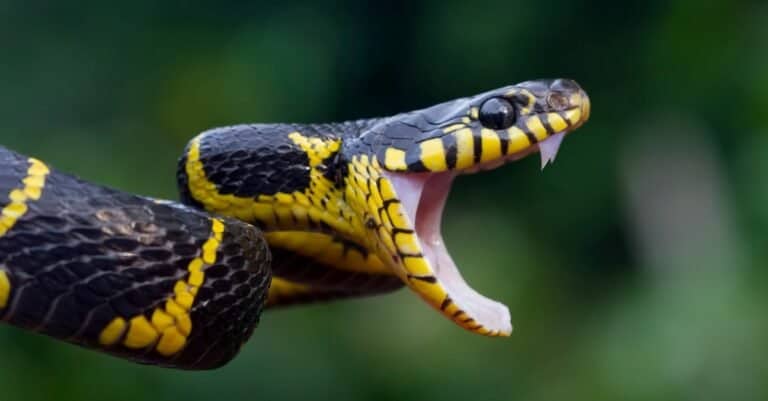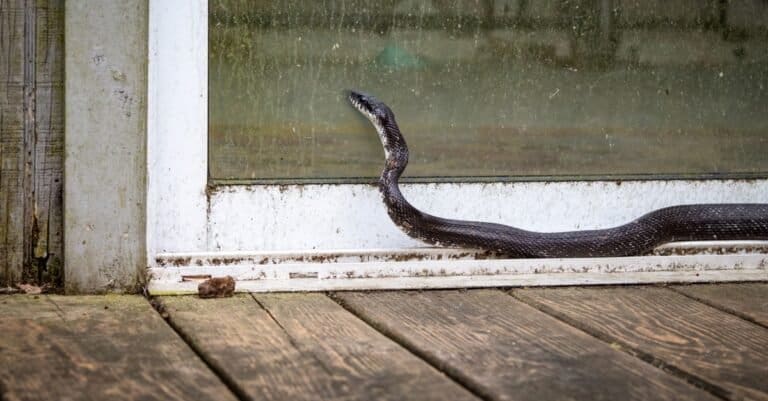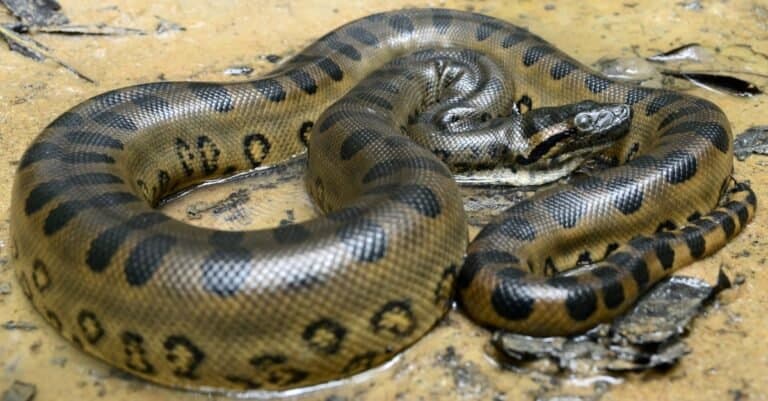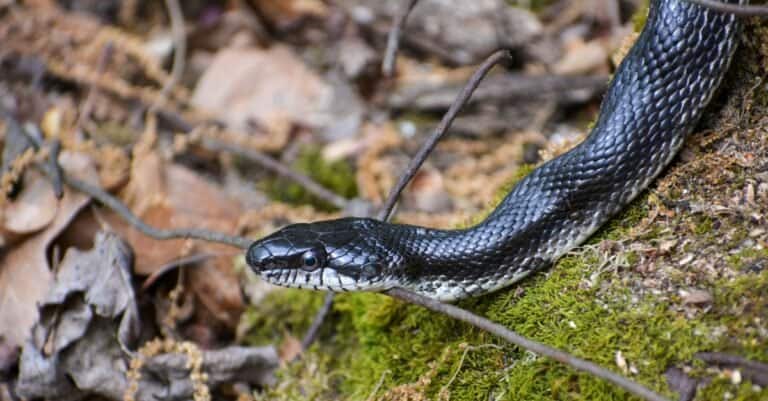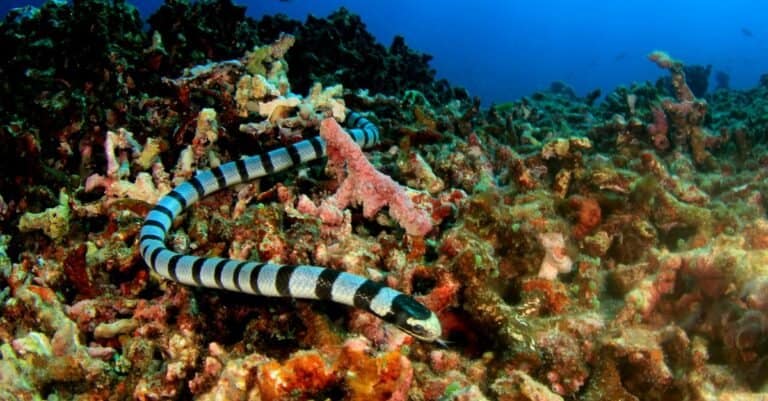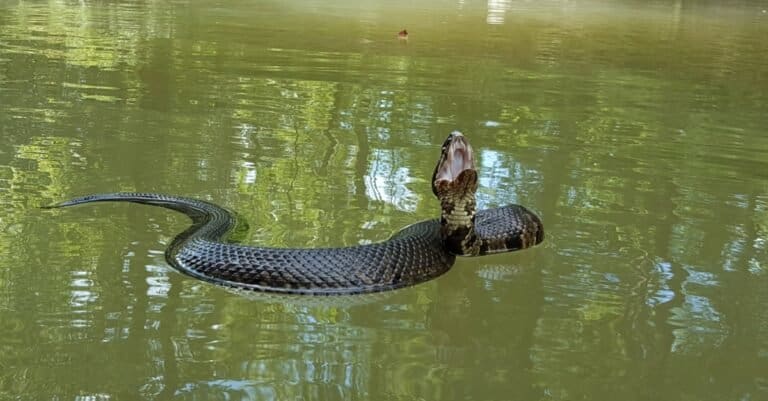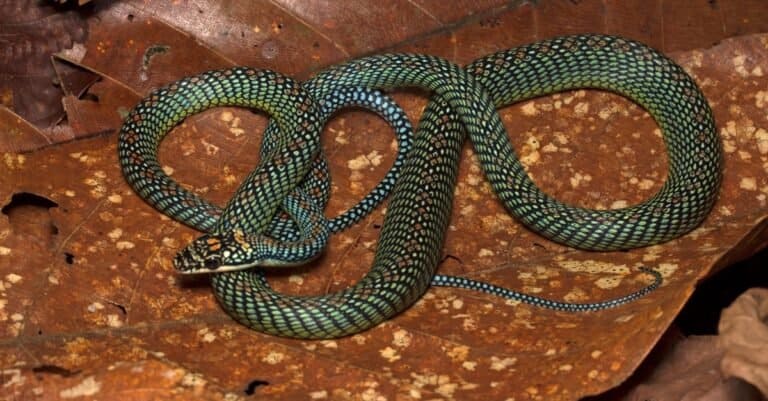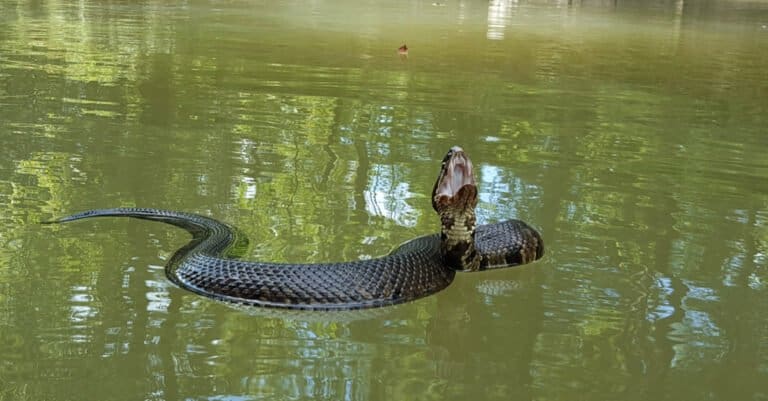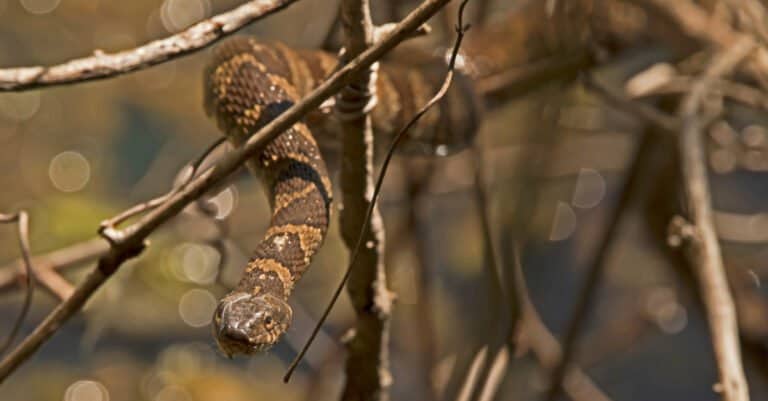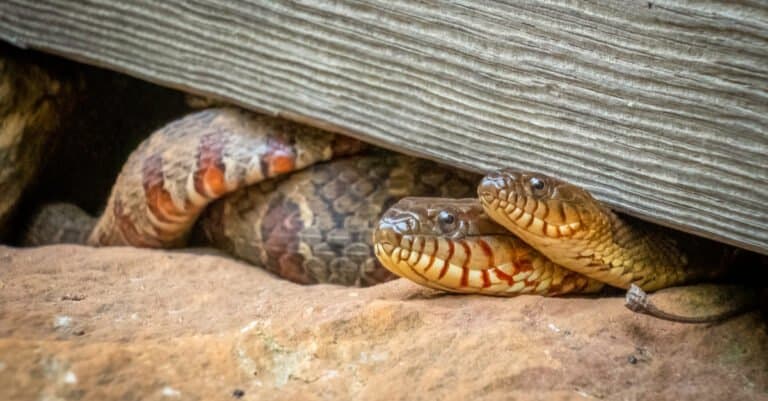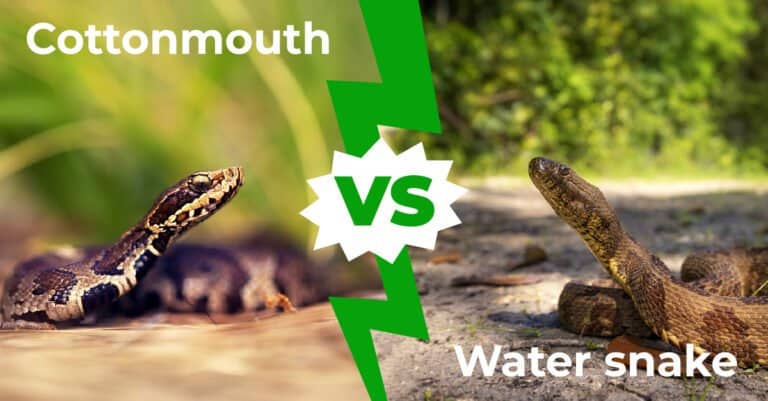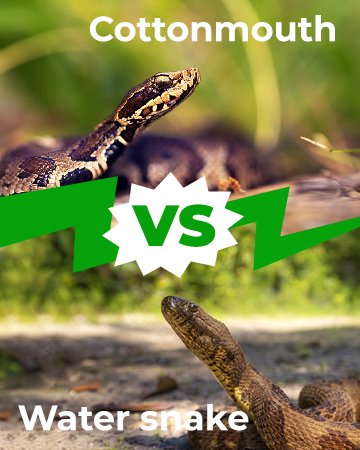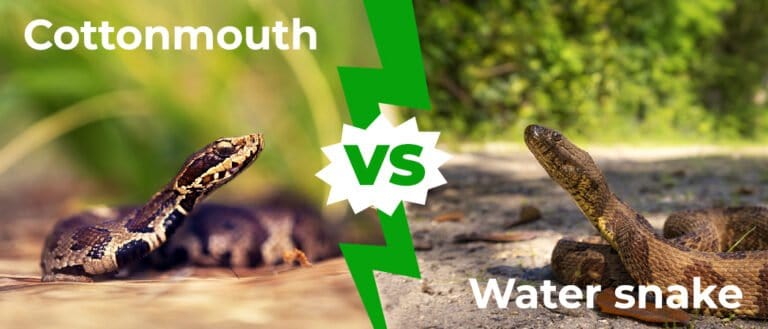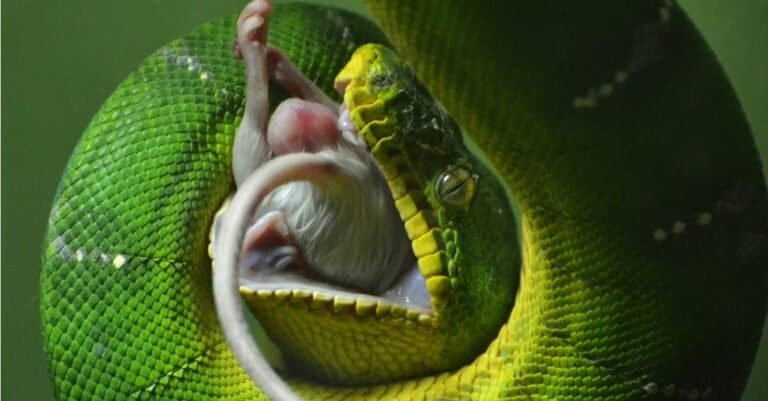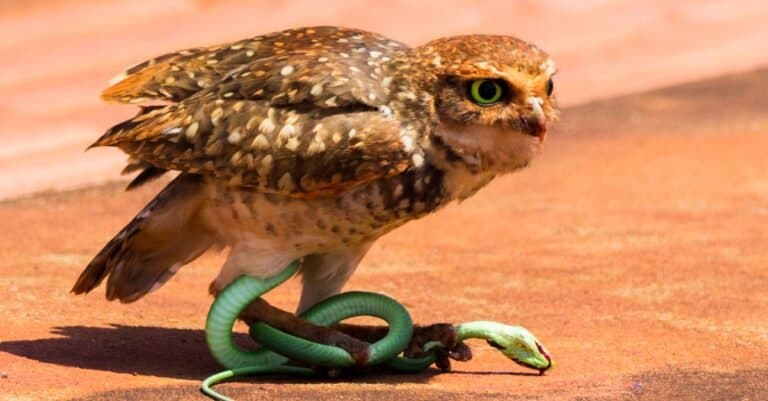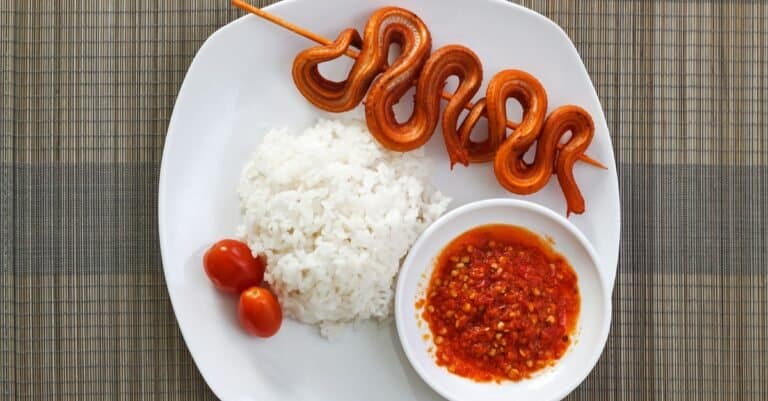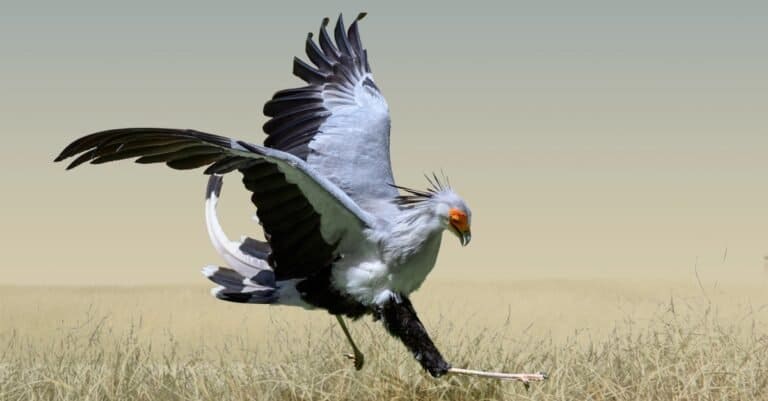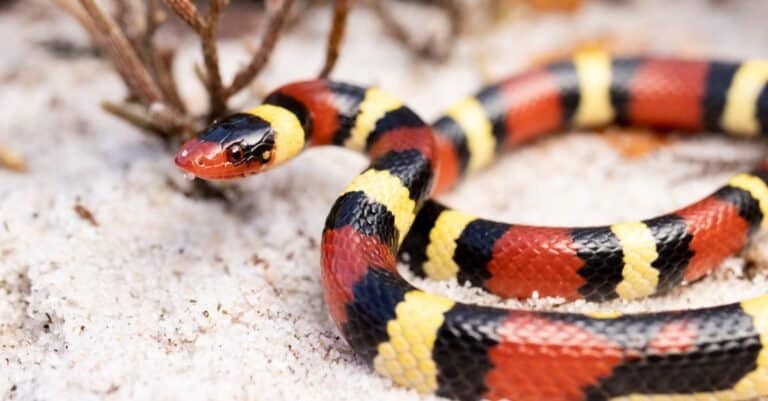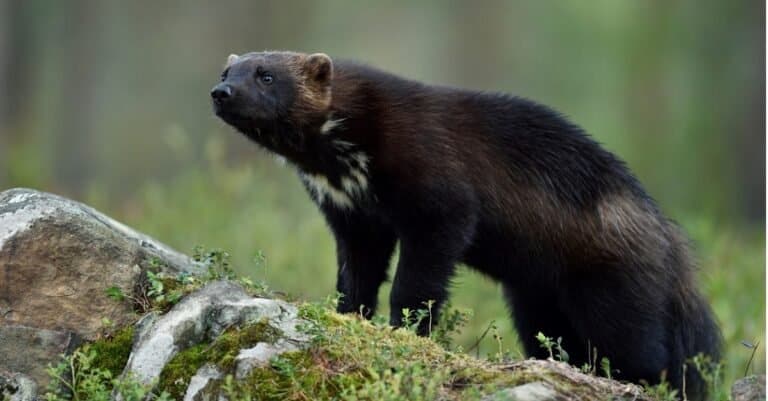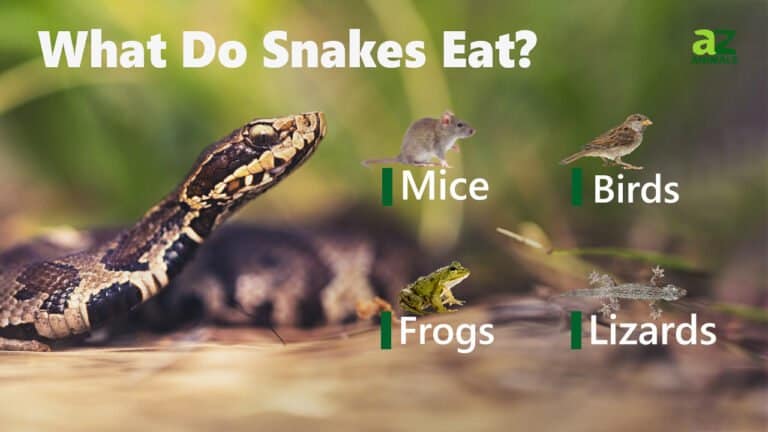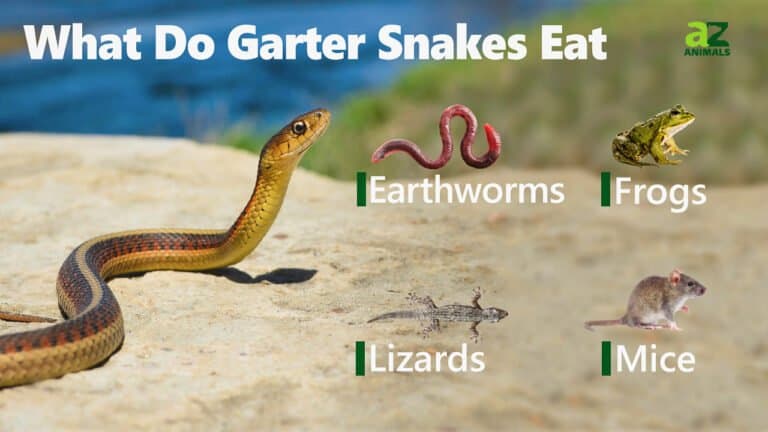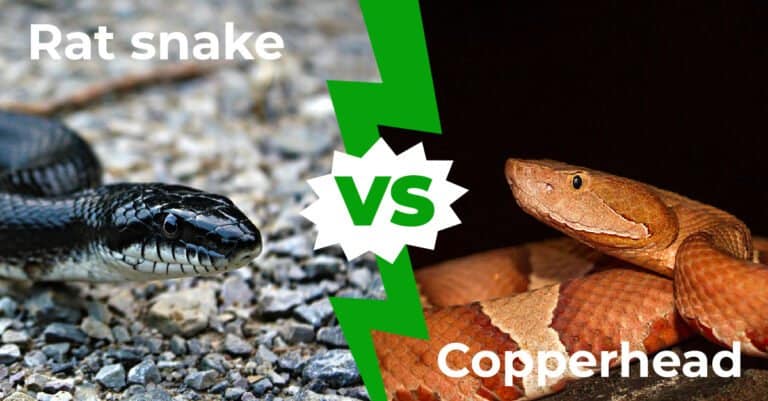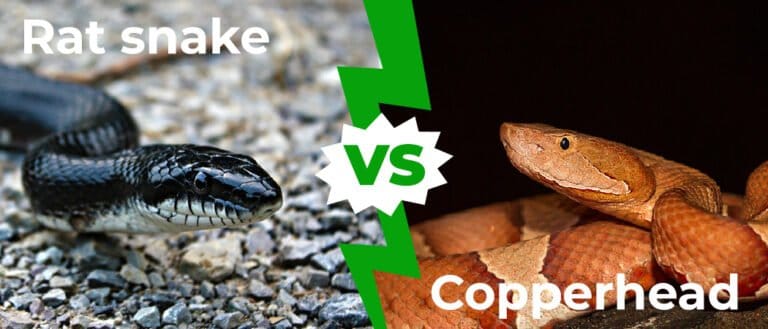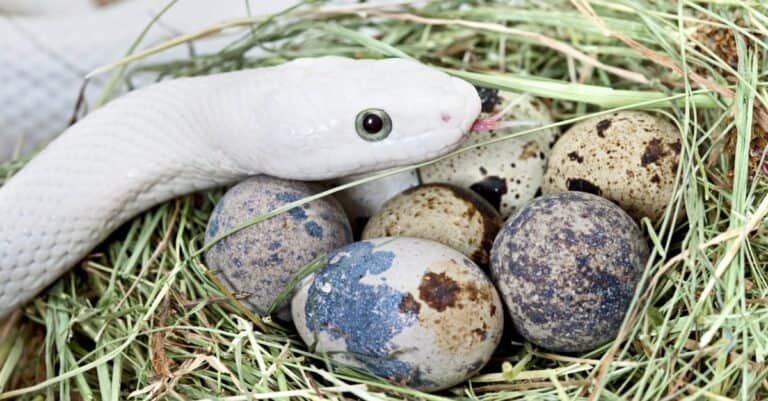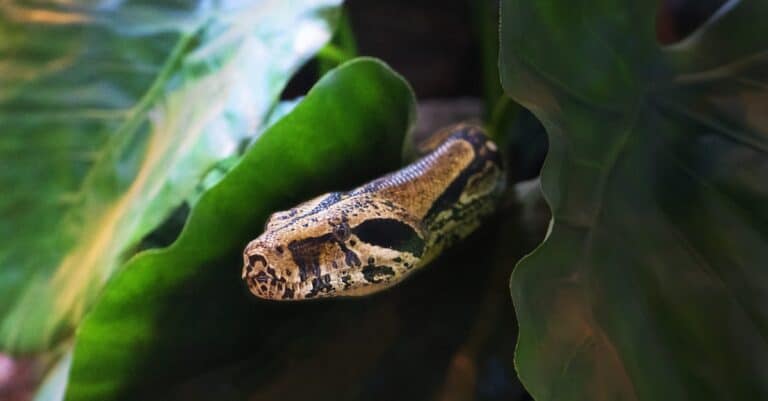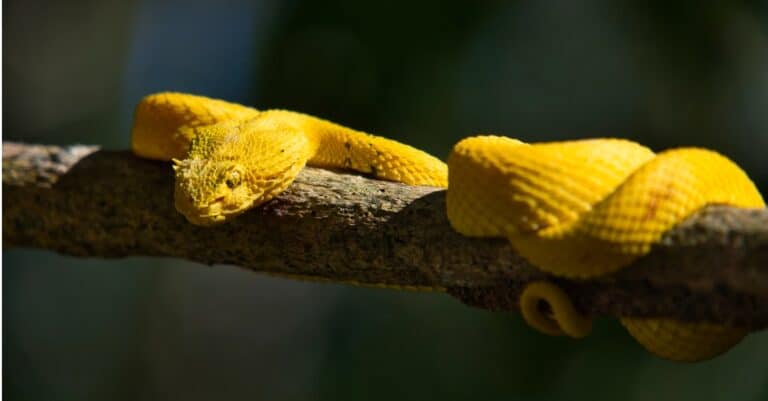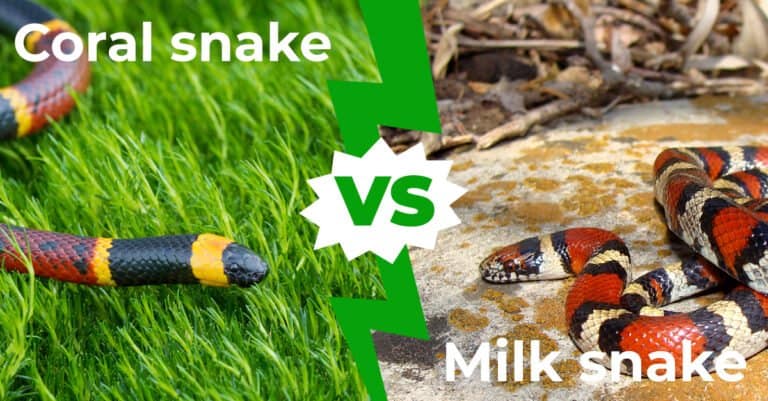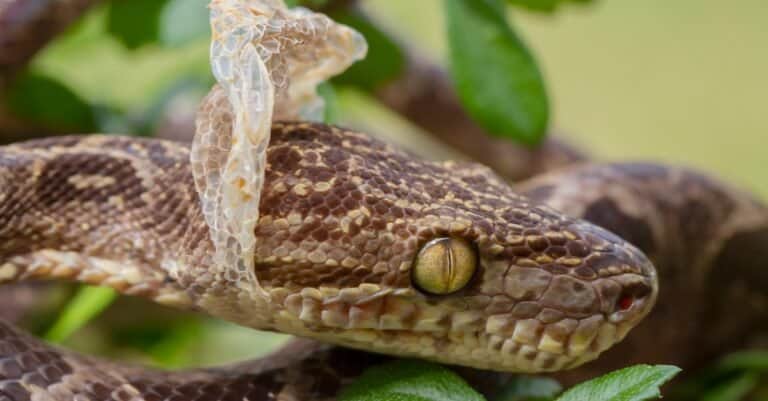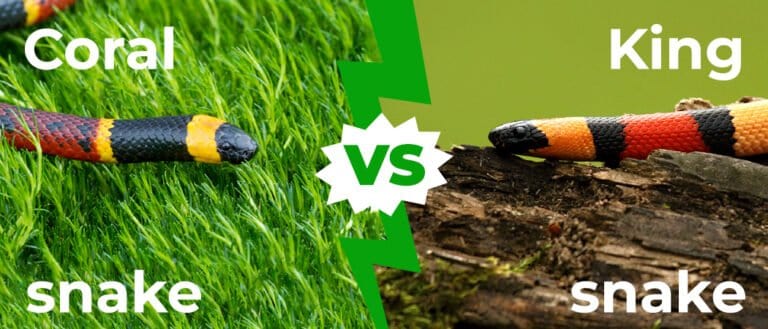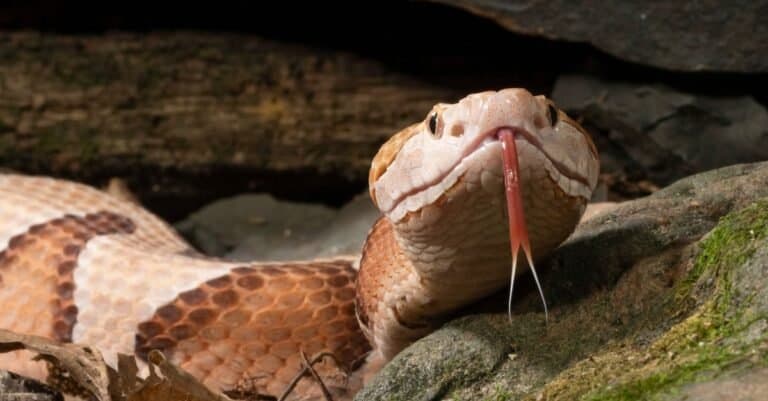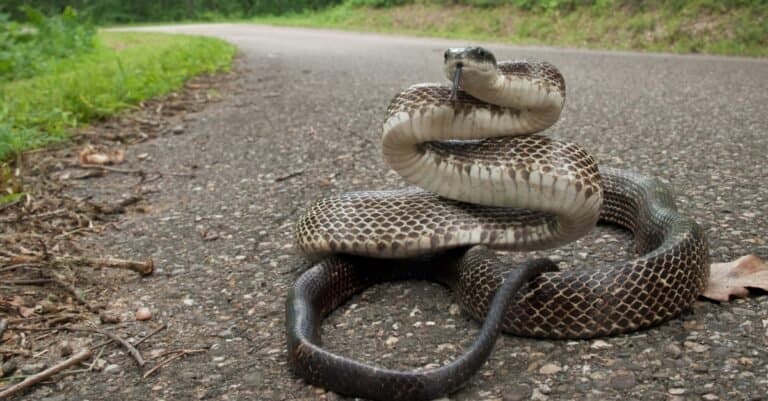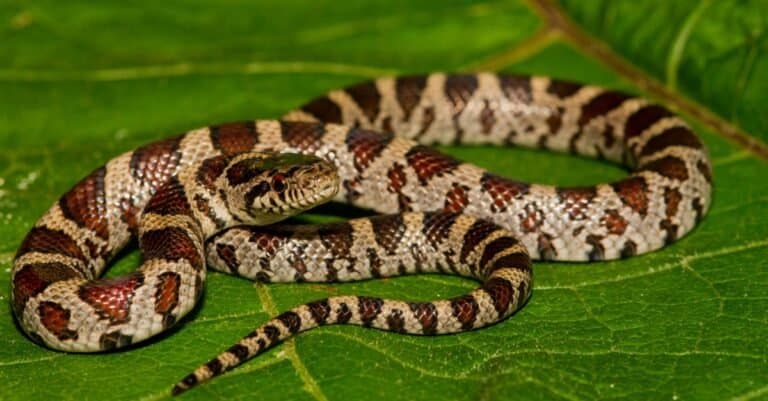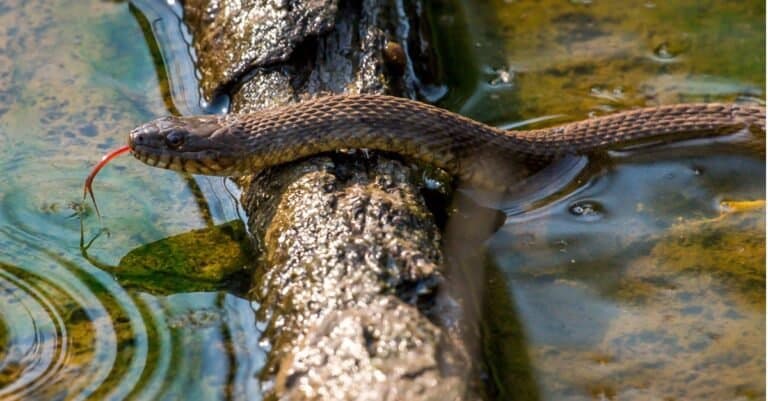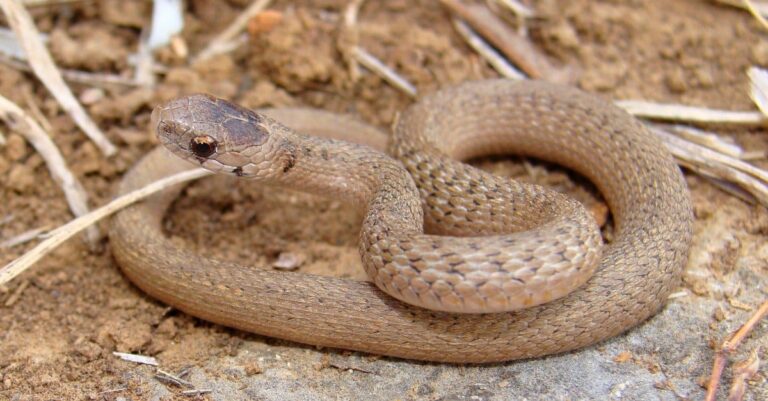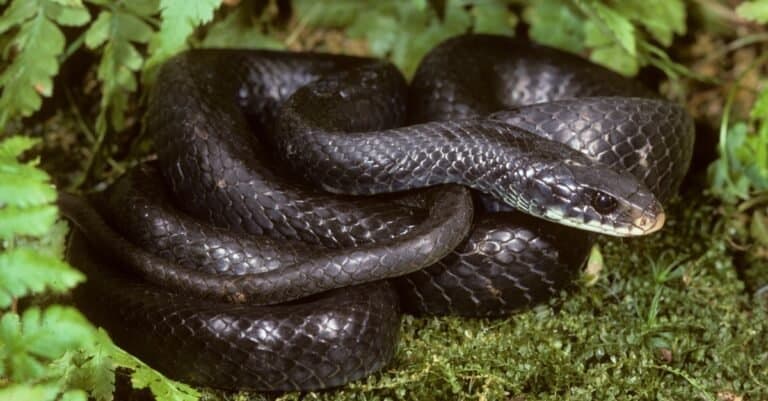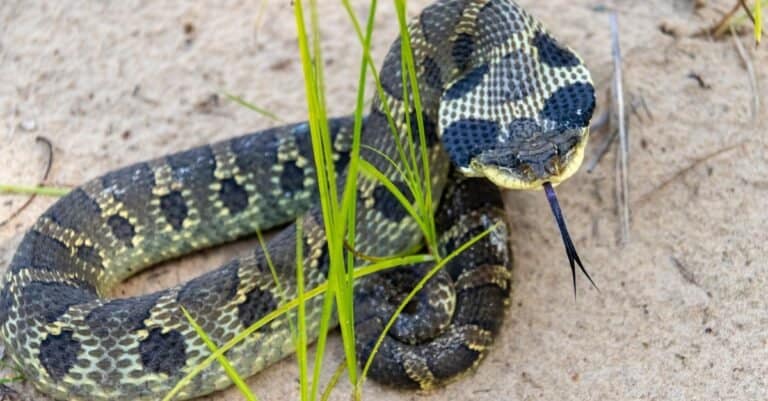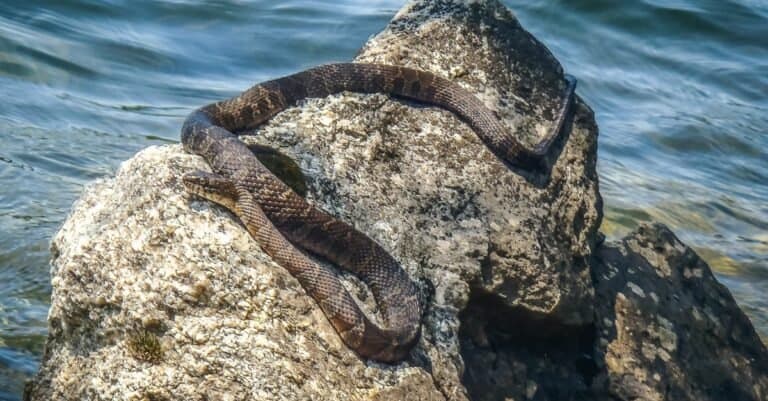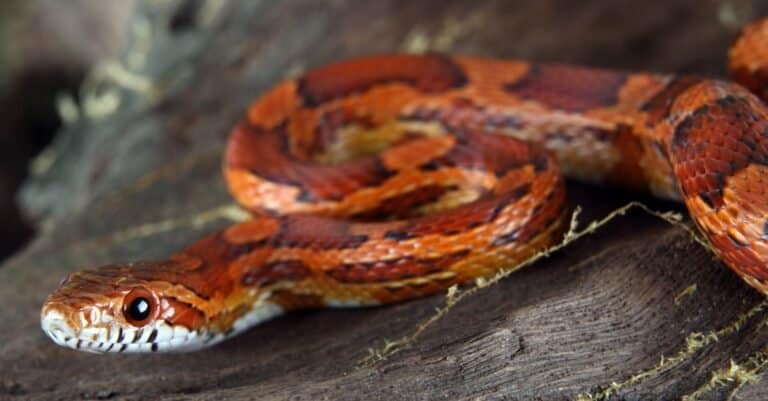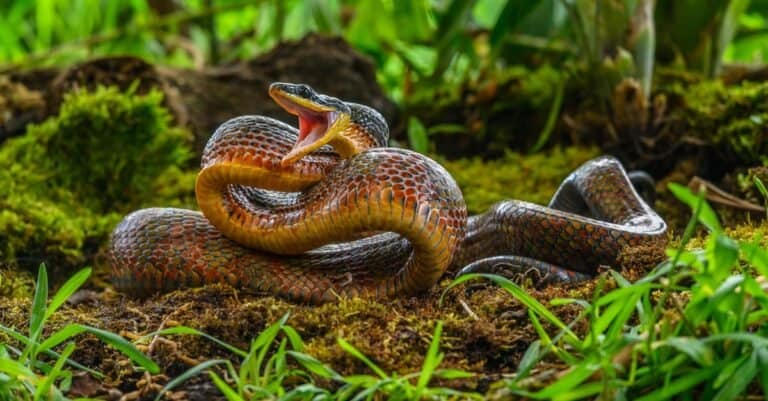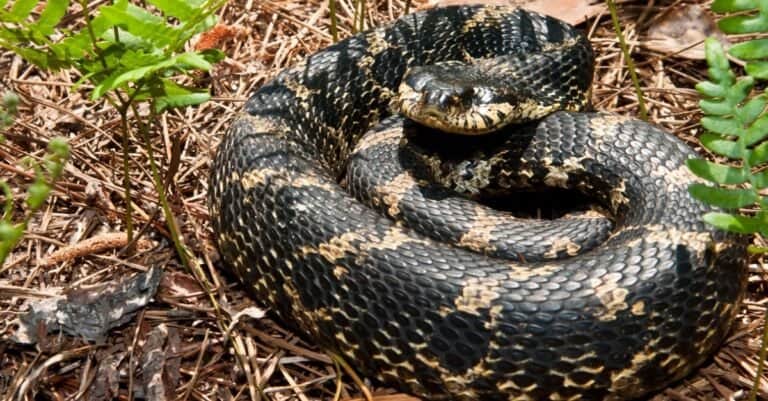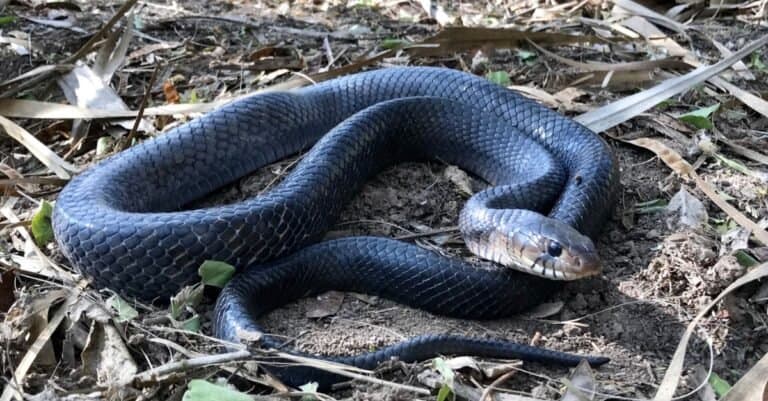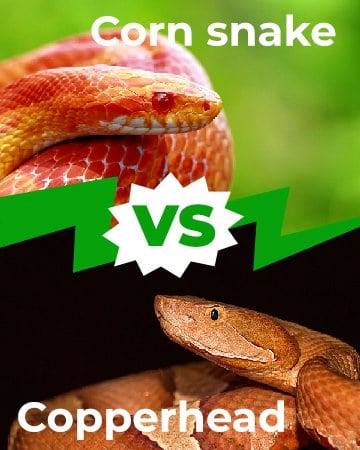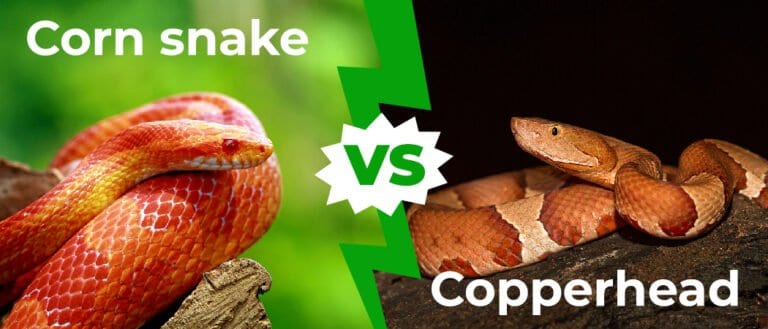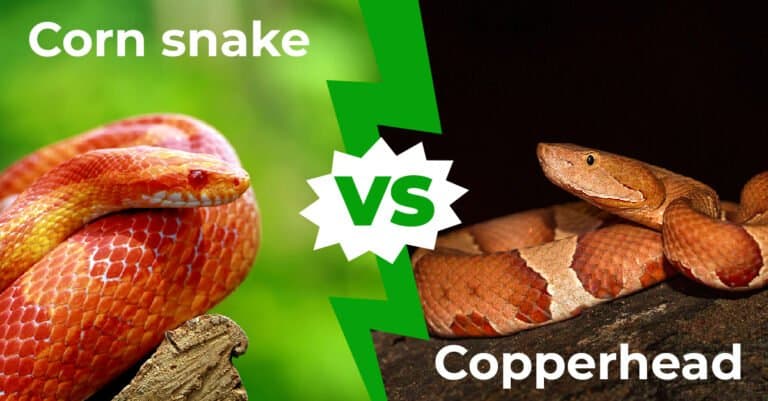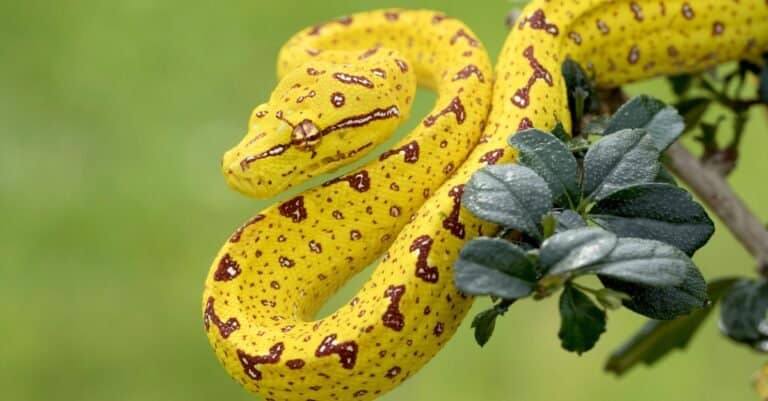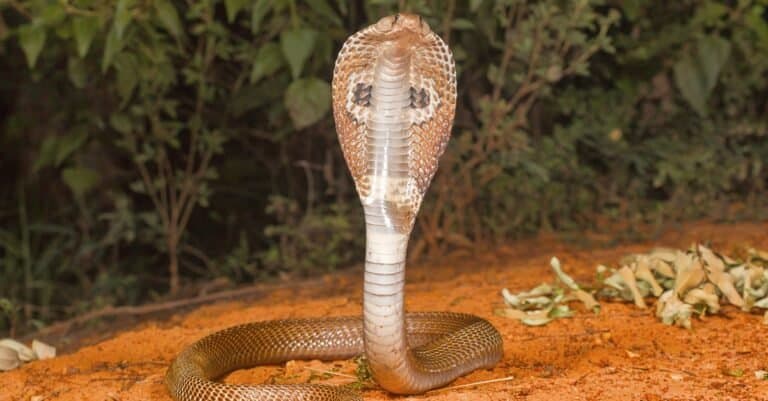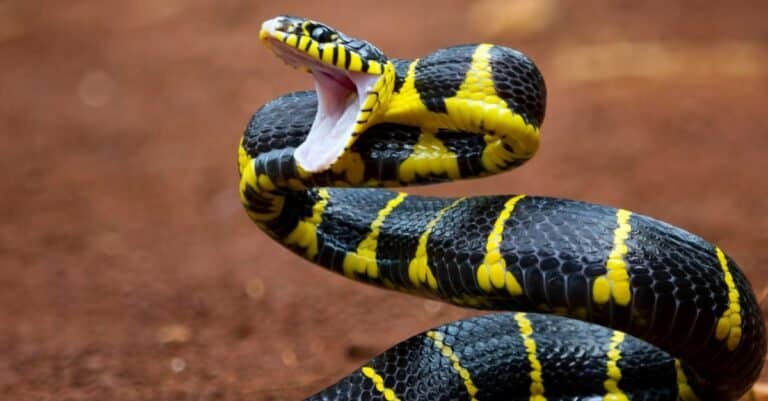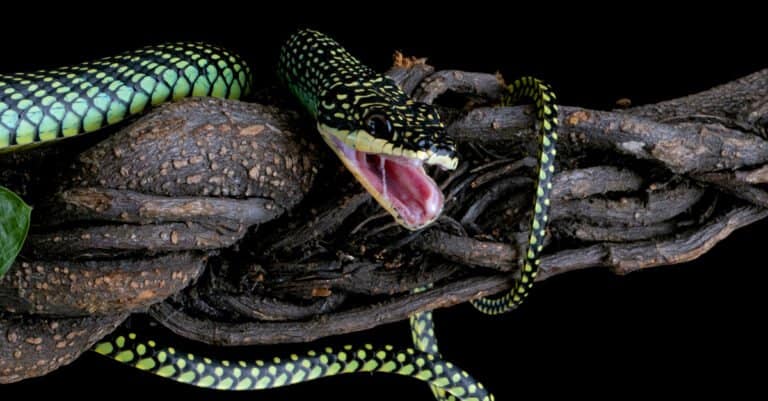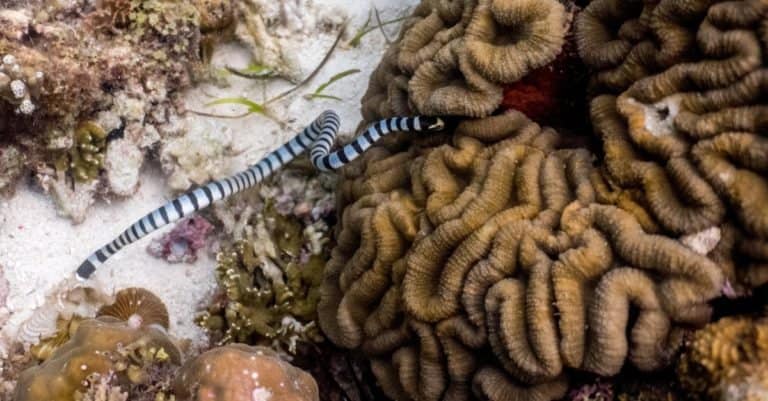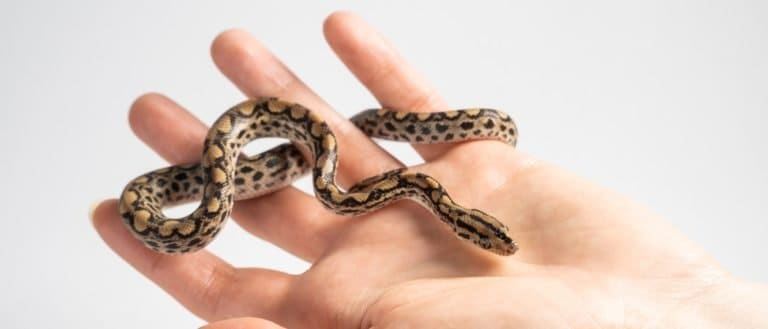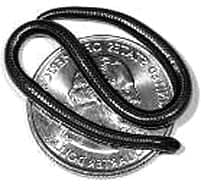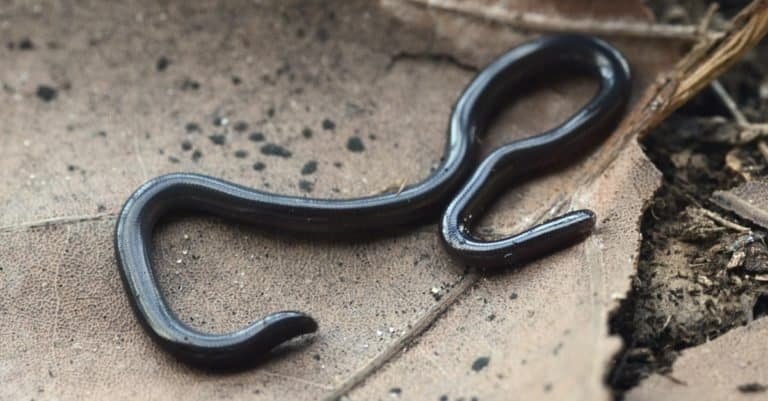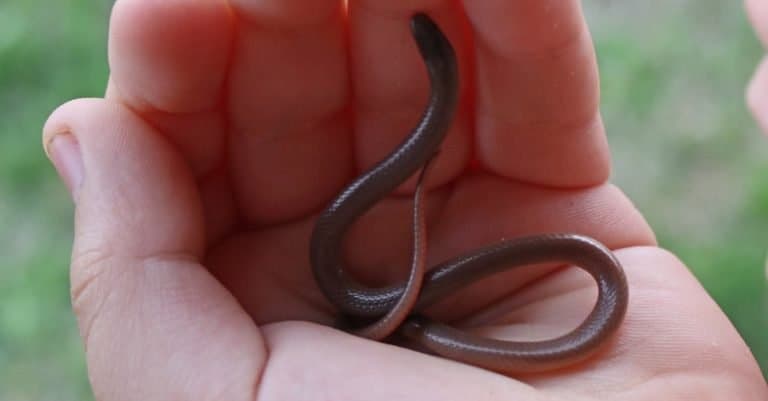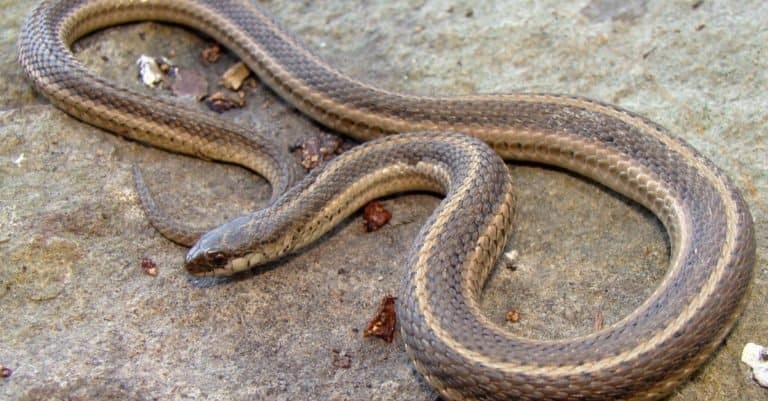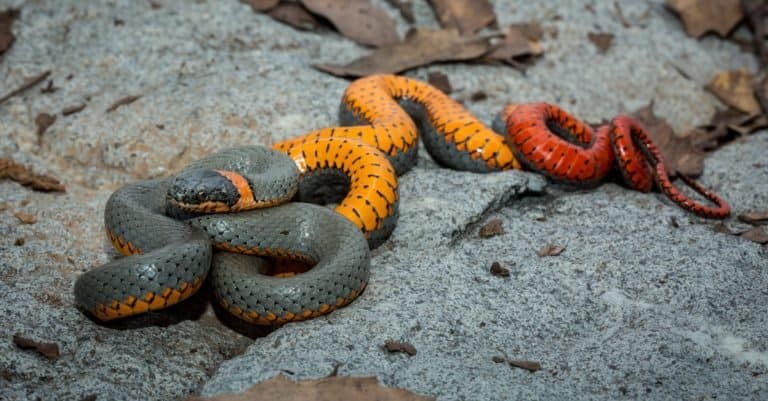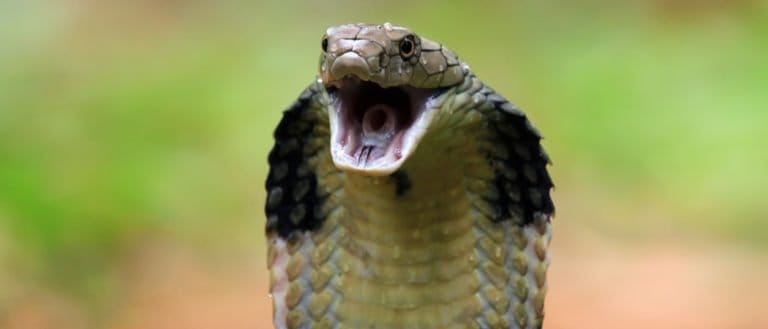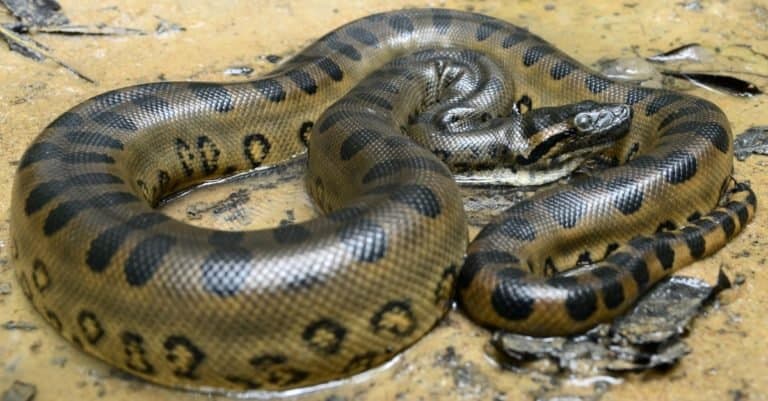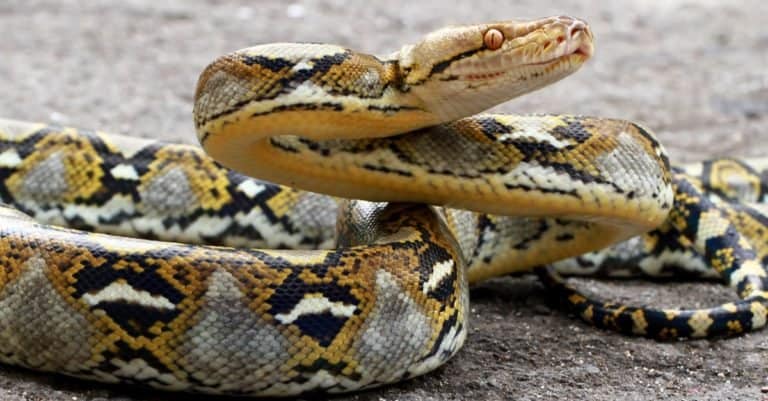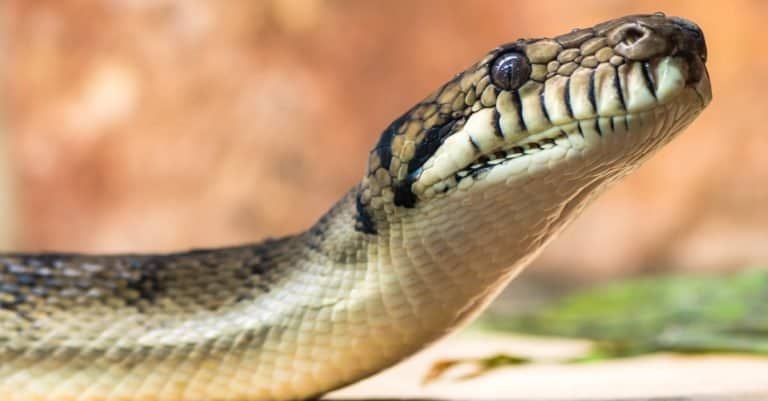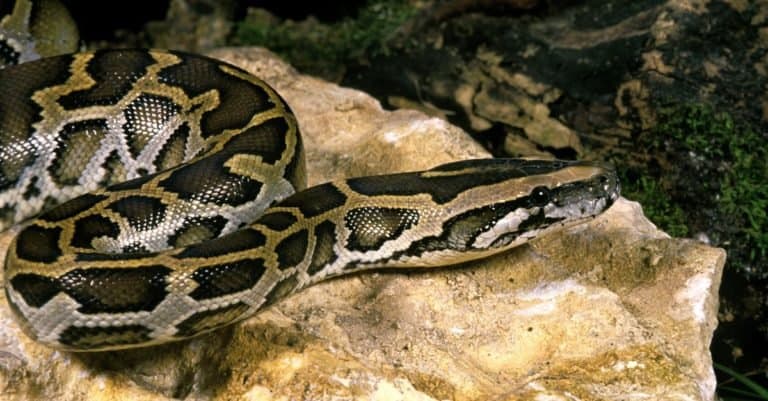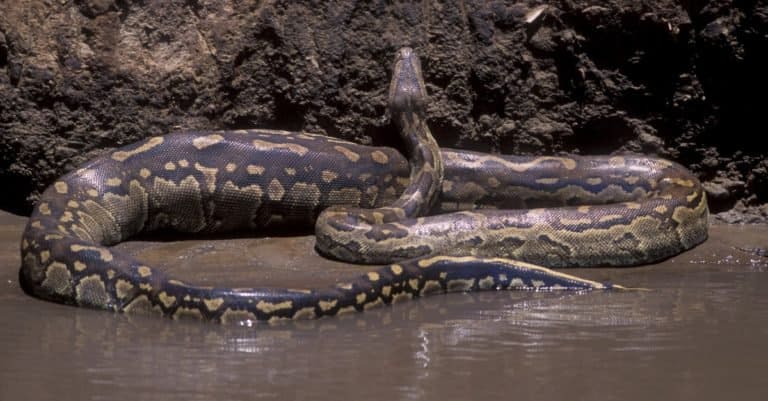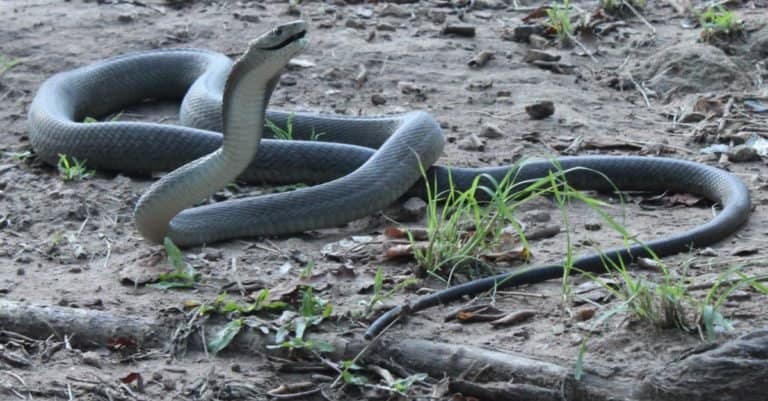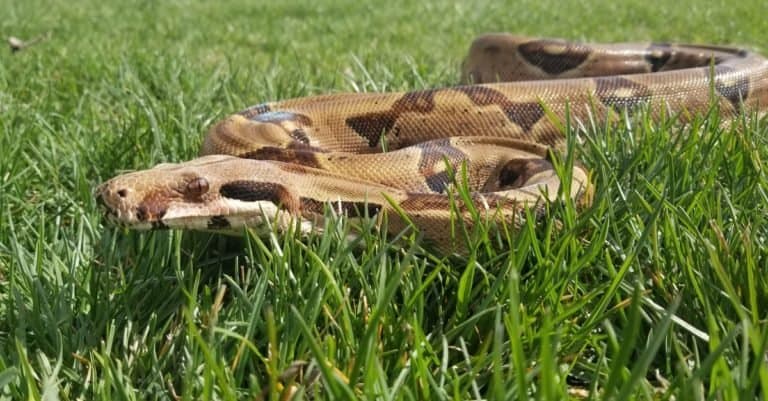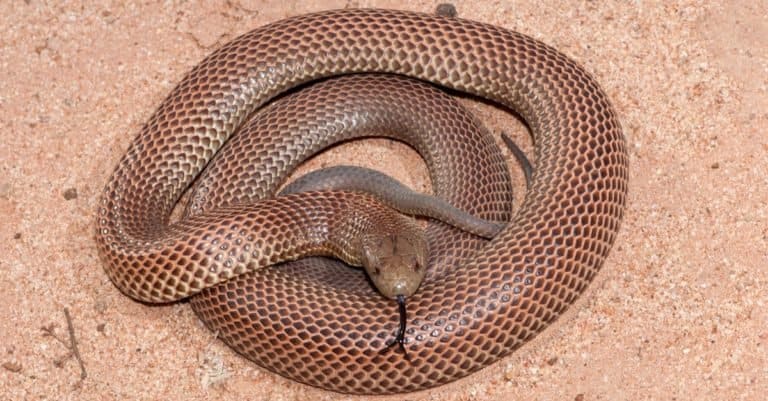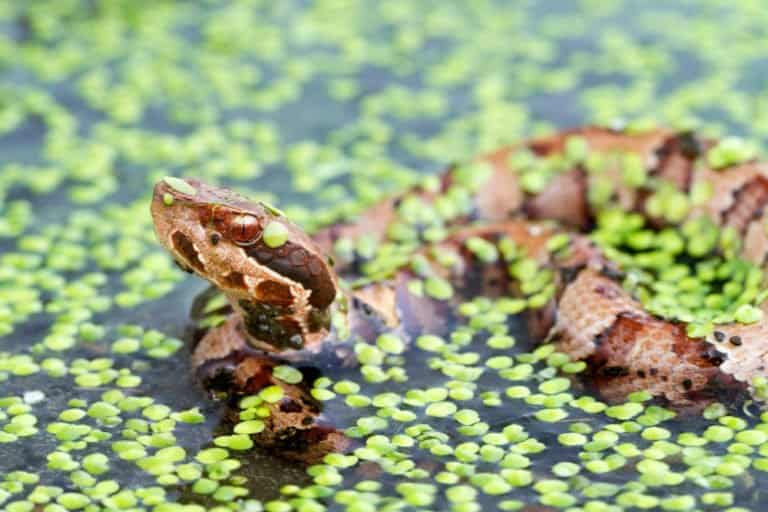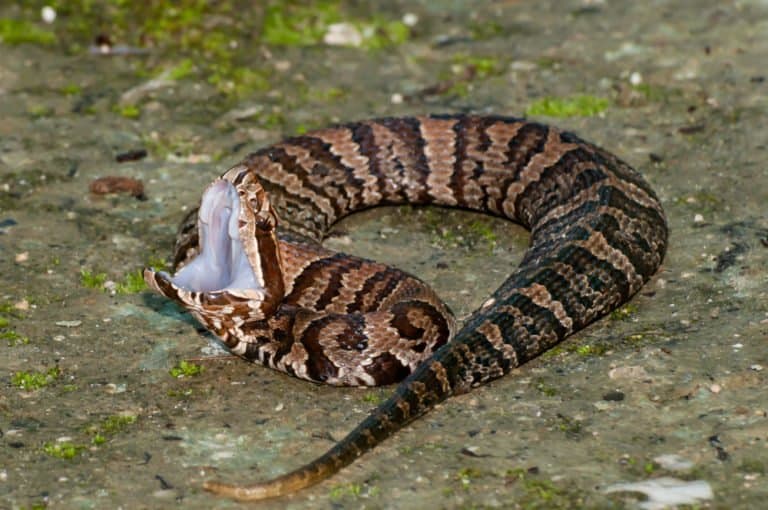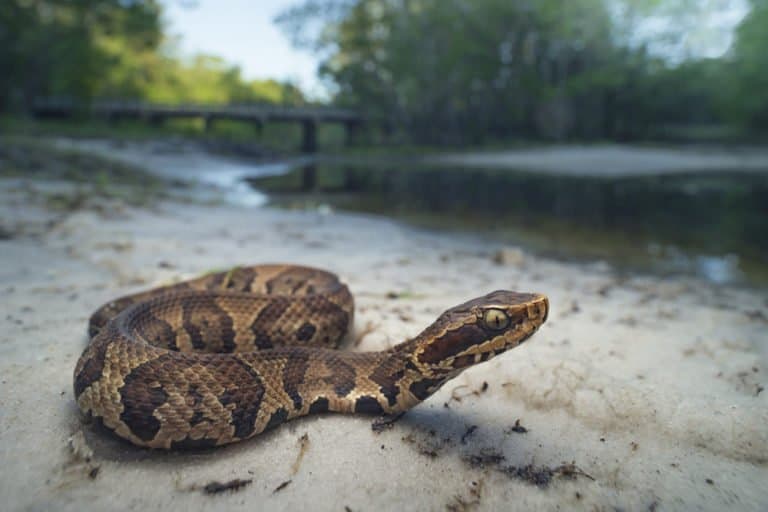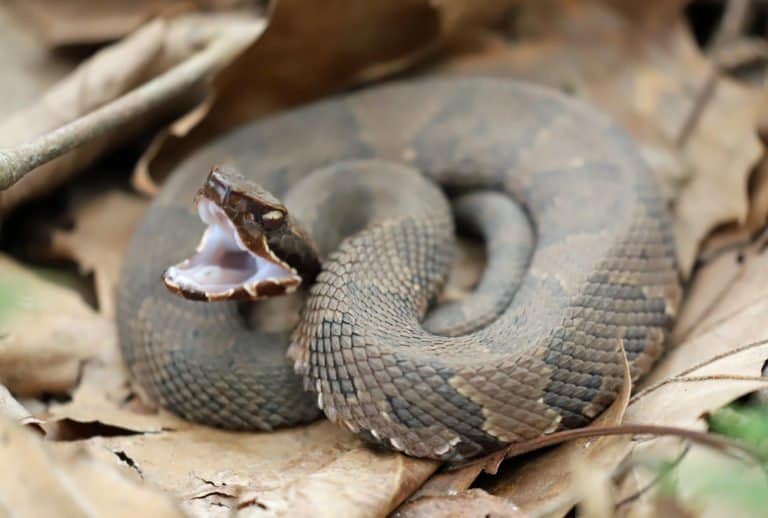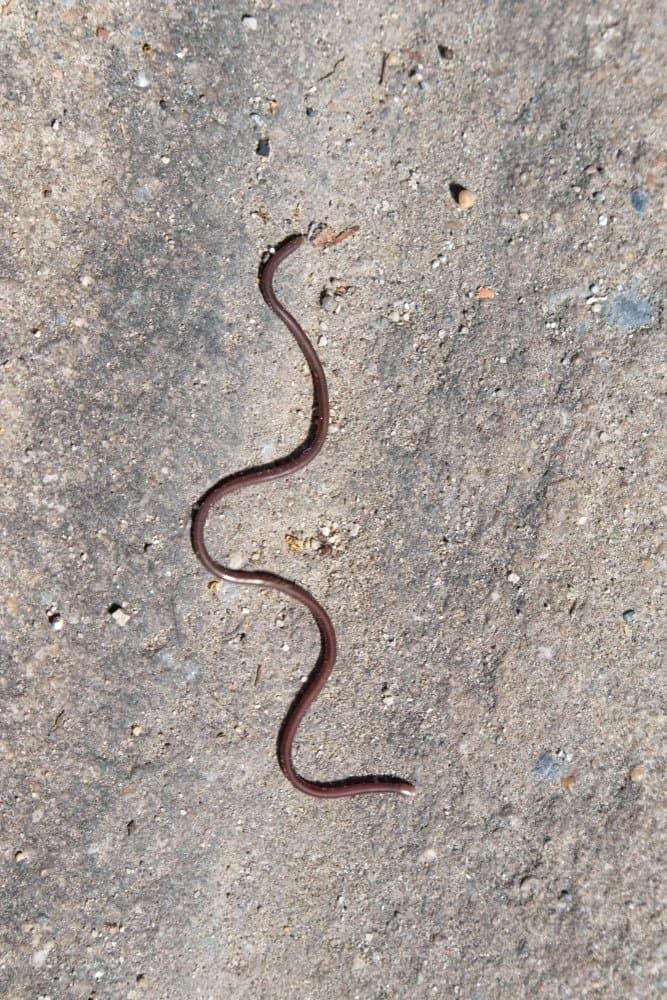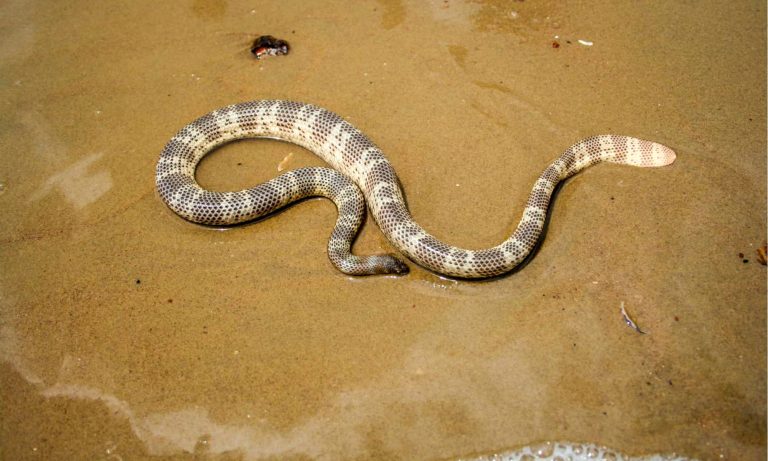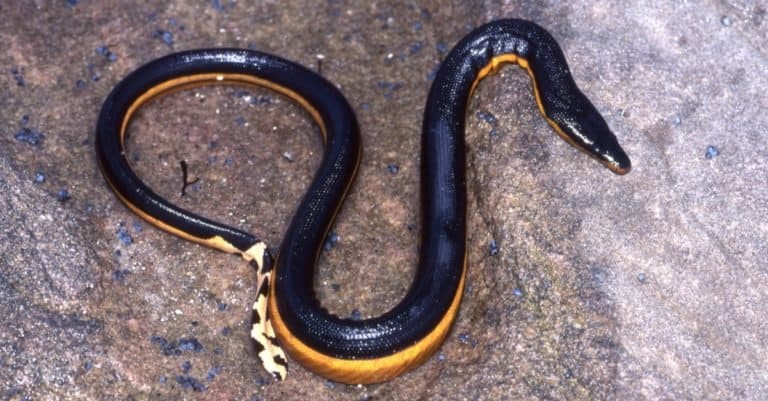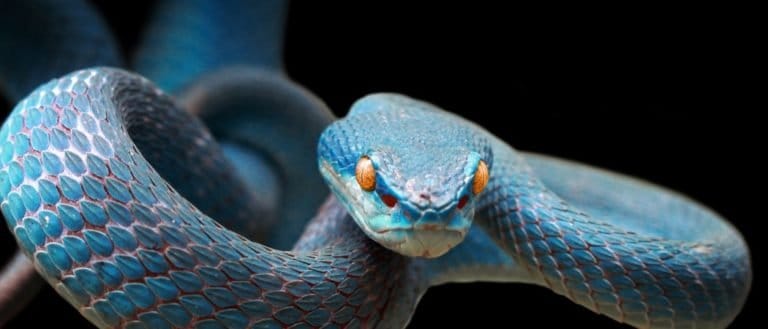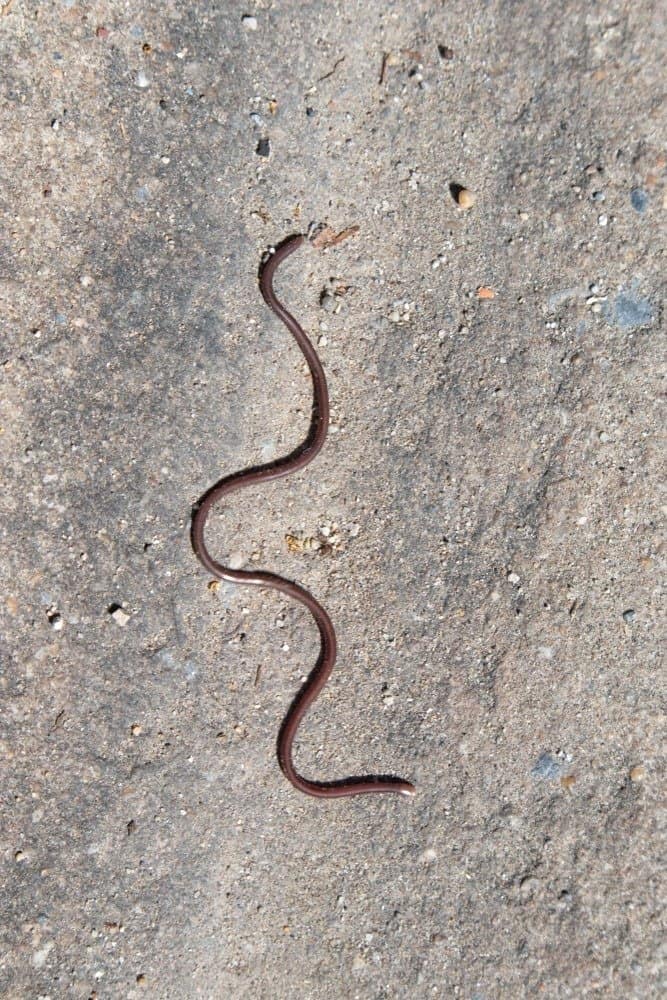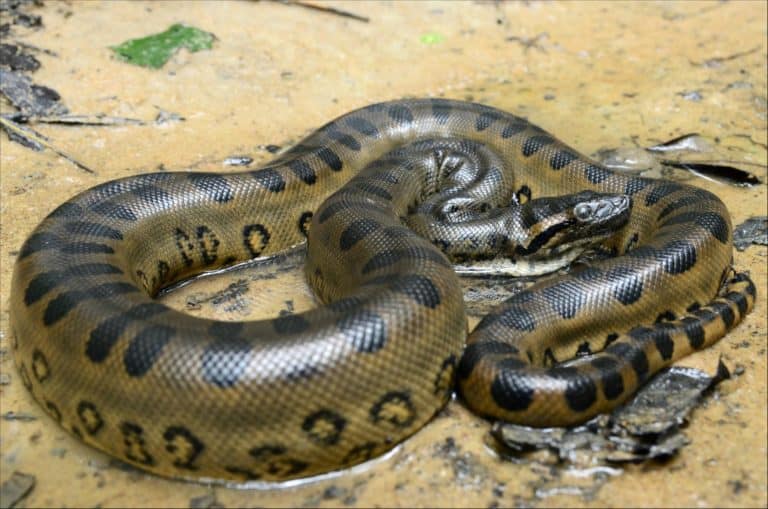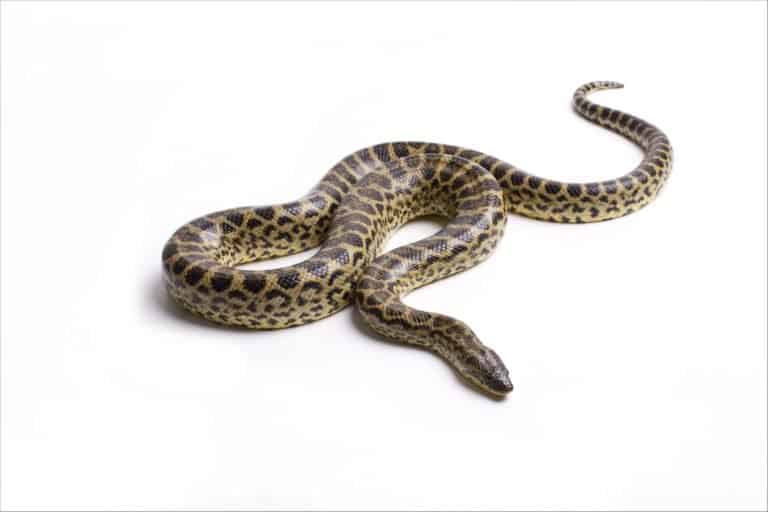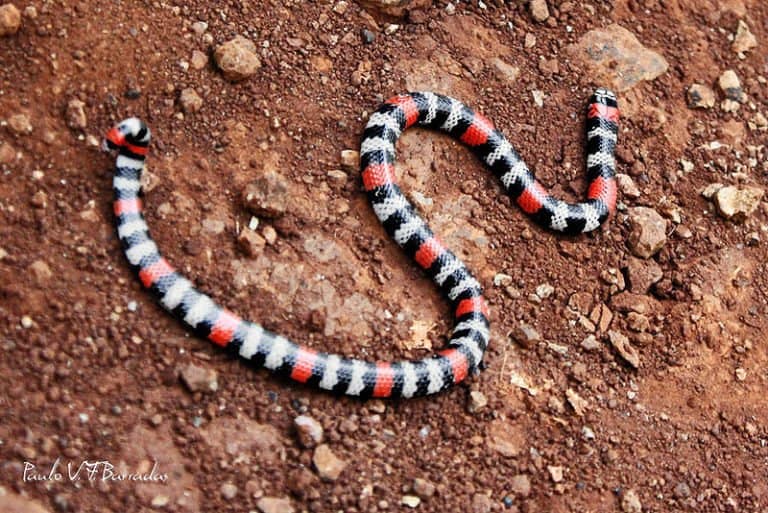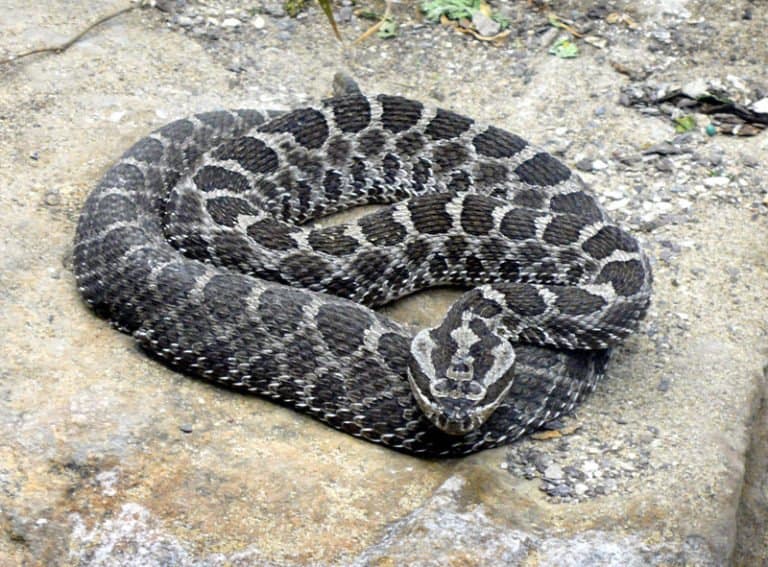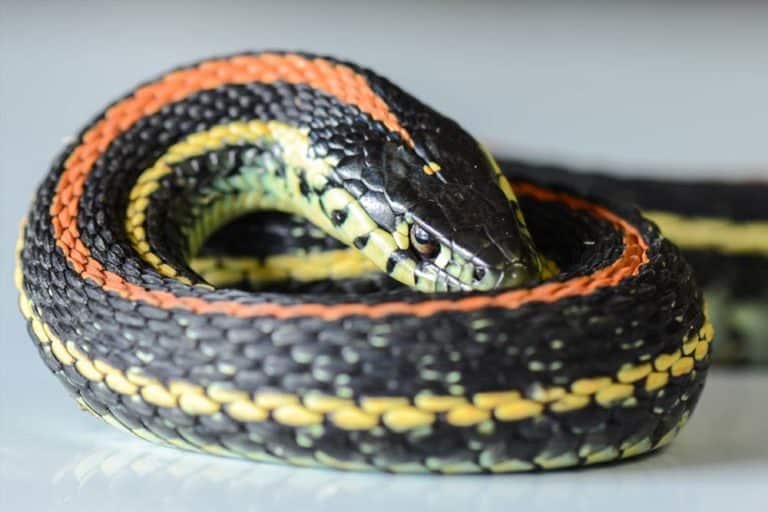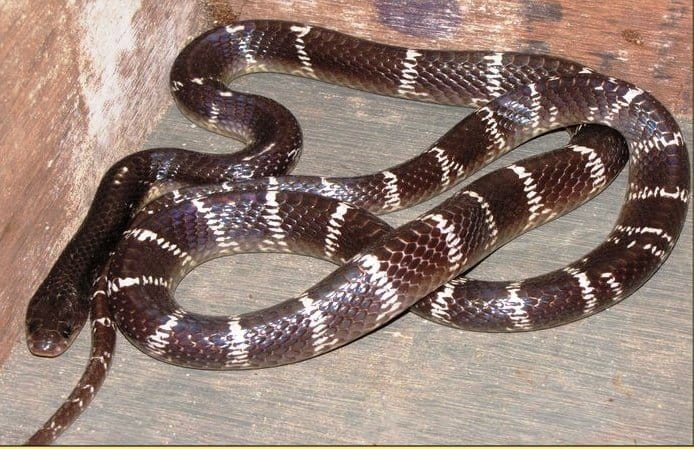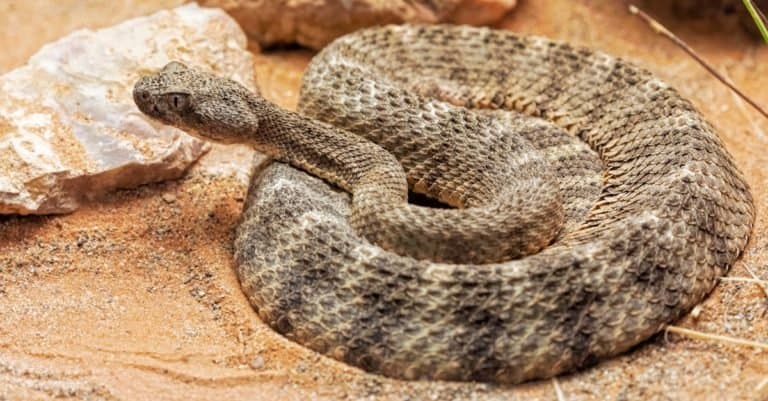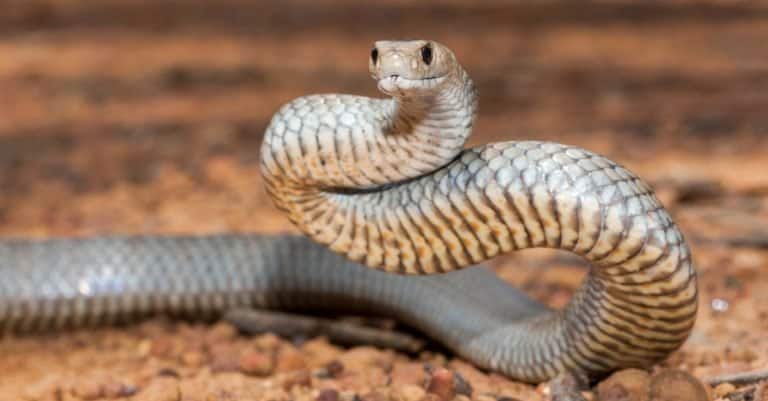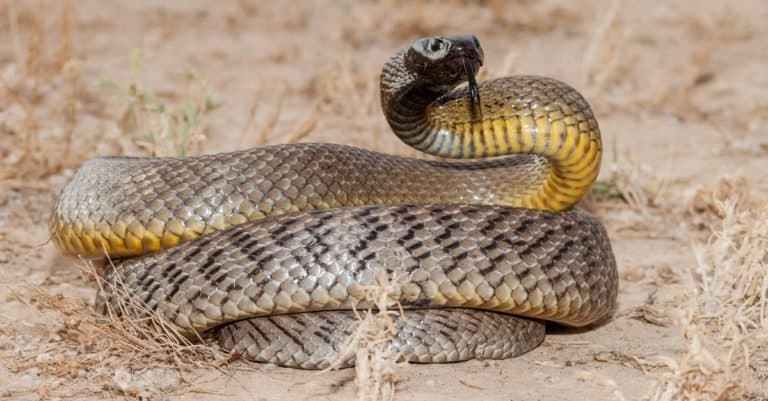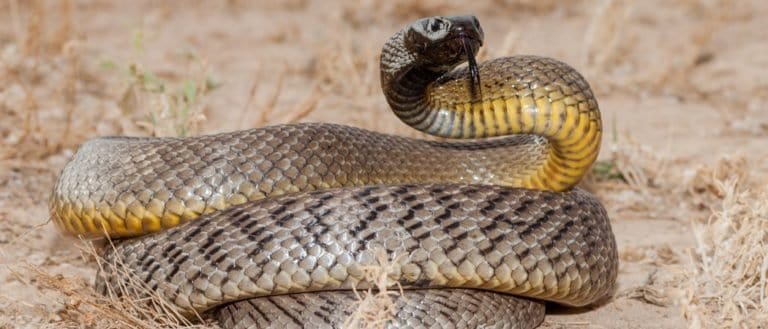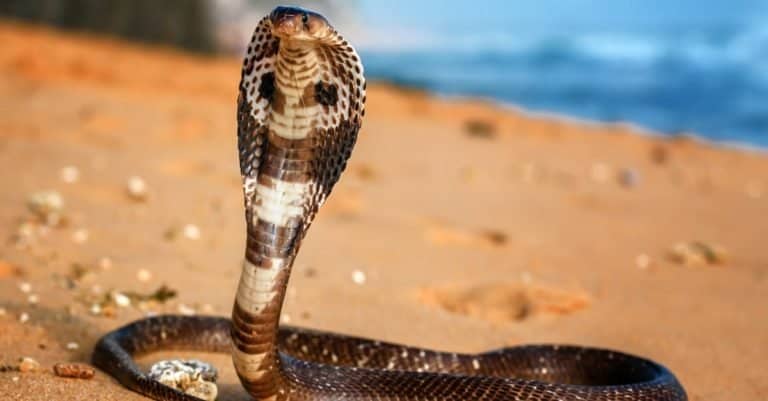Snake Animal Pictures
Advertisement
Cobra
Black and Red Snake, Eastern Mud Snake, Farancia abacura
Florida Banded Water Snake - profile
Found in many of the bodies of water in Florida, the Florida-banded water snake consumes everything from frogs to turtles.
Despite its eye-catching color spectrum, the Eastern Coral snake is highly venomous.
A Florida Pine Snake coiled on the ground.
Though non-venomous, the Florida Pine snake squeezes its prey to death.
Eastern Indigo Snake stock photo Navy Blue, Snake, East, Animal, Animal Scale The eastern indigo snake is a large nonvenomous snake native to the Eastern United States.
The Eastern indigo snake may be non-venomous, but its ability to grow over nine feet in length makes it daunting.
Indotyphlops braminus, commonly known as the brahminy blind snake , Satara, Maharashtra, India
Thin and tiny, the Brahminy blind snake is sometimes mistaken for a baby snake of another species.
Indotyphlops braminus, commonly known as the brahminy blind snake , Satara, Maharashtra, India
Monterey Ring-necked snake in a defensive posture. Big Sur, California, USA.
Small and colorful, the ring-necked snake is nocturnal and non-venomous.
vieleineinerhuelle / pixabay https://pixabay.com/photos/line-two-heads-malformation-2315848/ https://pixabay.com/service/license/
Malformation Snake Two Heads
Snakes rely fully on external heat or light sources.
Snakes do not hibernate. Instead, they brumate.
Snakes require an external heat source to power their metabolism.
Snakes that are kept as pets are more likely to eat themselves than snakes in the wild.
Large black snake held by a boy - Black Rat Snake, Pantherophis or Elaphe obsoleta (focus centered on snake)
Best Pet Snakes
Louisiana Milk-snake found after a fall cold front blew through southeast Texas. The common name "milk snake" originated from the false belief that these snakes milked cows.
By Ltshears - Own work, CC BY-SA 3.0, https://commons.wikimedia.org/w/index.php?curid=7984337 Ltshears / Creative Commons https://creativecommons.org/licenses/by-sa/3.0/deed.en
African House Snake Lamprophis fuliginosus at the Louisville Zoo. They are named "house" snakes as they are frequently found around human dwellings, feeding on the rodents that congregate around the human waste.
corn snake
Corn snakes are constrictors, wrapping themselves around prey to squeeze and subdue it before swallowing it whole.
California Kingsnakes (Lampropeltis californiae) are called kingsnakes because they sometimes eat other snakes, as does the king cobra.
Ball pythons are named after their natural defensive behaviors. They tend to curl up into a ball with their head toward the center of the ball when threatened.
Gartersnake coiled in the grass
Garter snakes are harmless to people, but have mildly venomous saliva.
Western Hognose Snake with its hood inflated. The hognose snakes' most distinguishing characteristic is their upturned snout, which aids in digging in sandy soils by using a sweeping, side-to-side motion.
Boa constrictors are a popular pet snake option.
Boa constrictors are non-venomous snakes famous for their method of subduing prey: squeezing, or constricting, it to death.
The Children's Python gets its name from the scientist who first described them in 1842, John George Children, the curator of the British Museum's zoological collection at the time of the discovery.
Broad-Band Copperhead snake (Agkistrodon laticinctus) on black background
copperhead snake
Copperhead snakes are usually only two to three feet long. Like most pit vipers, they have stocky bodies, thin necks, and broad, angular heads.
Snakes typically deposit the waste from a meal all at once.
A regularly recurrent event during the activity period of all snakes is the shedding, or molting, of the skin.
An exotic veterinarian helping a smooth snake to shed its skin.
How Often Do Snakes Shed
Boiga snake dendrophila yellow ringed, Head of Boiga dendrophila, animal closeup, animal attack
Where Do Snakes Live
Black rat snake looking in sliding glass door on back porch in North Carolina in spring. Snake season is beginning. Practice pet safety
A Black rat snake looking in sliding glass door on back porch of a house in North Carolina in spring.
A Green anaconda (Eunectes murinus), which is especially partial to flooded grassland.
Black Rat snake
A Banded Sea Snake swimming over a coral reef.
Water moccasin floating on water. Water moccasins are very common in wetlands.
A juvenile Borneo Paradise Flying Snake on a leaf. These snakes commonly live in the rainforest.
Cottonmouth
Cottonmouth swimming in water. The snake has a long, thick, muscular body measuring up to 6 feet in size.
Water snakes’ eyes are higher on their head, visible from above.
Green Tree Python/Emerald Boa eating a mouse
Snakes can sometimes go weeks at a time without eating.
What Eats Snakes
Grilled snake on a skewer with chili sauce and steamed rice on white plate on mat top view. Cooked snake is a popular choice in some cultures.
Scientists in the UK have found that the Secretary Bird, native to sub-Saharan Africa, can deliver precise and powerful kicks with a force five times its own body weight; enough to kill venomous snakes in less than the blink of an eye.
Kingsnakes are known for eating other snakes - including venomous species. Kingsnakes are apparently immune to the venom of the snake species upon which they prey.
The wolverine is very quick and can run at speeds of up to 30 miles per hour when chasing its prey. The wolverine also pounces on its prey from trees.
White Texas rat snake in a bird's nest.
Snake eggs that aren't white or off-white are more than likely not viable.
Snakes sometimes come out of their shelters to bask in the sunlight during brumation.
deadly toxic eyelash viper snake in Costa Rica
Snakes do not eat more to store fat before entering brumation.
Amazon Tree Boa Snake Shedding it's Skin
Snakes shed their skin in one piece.
Snakes That Look Like Copperheads
Black Rat snake
Large adult Eastern black rat snake in defensive coiled posture on a road. When threatened, rat snakes will "rattle" their tail, fooling other animals into believing they are venomous.
eastern milk snake on a leaf
Eastern milk snakes are very beneficial animals, especially for farmers, as they hunt down small rodents often found on farm buildings and barns.
Northern Mole Kingsnake
Mole kingsnakes are rarely seen in the wild since they tend to be fossorial, spending much of their time underground and out of sight.
Texas Brown Snake, Storeria dekayi texana. There are seven subspecies recognized.
The black racer is an agile and very fast animal that can "run" (crawl) 4 miles per hour when it is threatened, hence the name "racer".
Eastern Hognose Snake with a flattened neck on sandy soil with grass. The eastern hognose snake will flatten its head and neck and hiss loudly when threatened.
Northern Water Snake basking on a rock. Northern water snakes are also confused with another Connecticut snake, the venomous northern copperhead. Copperheads, however, are rarely found in water.
A beautiful corn snake in the garden. The name corn snake may have originated from the markings on this snake's belly, which resemble maize, or Indian corn.
The Puffing Snake, Phrynonax poecilonotus, is a species of nonvenomous snake in the family Colubridae. The species is endemic to the New World.
An Eastern Hognose Snake found in the Panhandle of Florida.
Eastern hognose snakes play dead in dramatic fashion.
The Texas indigo snake received its common name from the glossy iridescent ventral scales which can be seen as blackish-purple in bright light.
Corn Snake vs Copperhead
Corn Snake vs Copperhead
Corn Snake vs Copperhead
Animals That Lay Eggs
A juvenile Green Tree Python Snake in a tree, coiled and ready to strike.
Deadliest Animal in the World: Snakes
Spectacled cobra, Naja naja, Bangalore, Karnataka. The Indian cobra is one of the big four venomous species that inflict the most snakebites on humans in India.
Fear of Animals: Ophidiophobia
A yellow-ringed Boiga snake ready to attack. Snakes can't bite food so have to swallow it whole.
flying snake closeup on black backround, Flying snake ''Chrysopelea''
There are five recognized species of flying snakes.
World's Scariest Animal: Belcher's Sea Snake
Venom from the Belcher's Sea Snake is so toxic, that a single bite can kill a human being in less than thirty minutes.
Smallest Snakes Small non-poisonous grass snake on the woman's palm.
Smallest Snakes
Smallest Snakes: Barbados Thread snake John Oldale / CC BY-SA 3.0 https://commons.wikimedia.org/wiki/File:Leptotyphlops_carlae_BW.jpg#mw-jump-to-license https://creativecommons.org/licenses/by-sa/3.0/deed.en
The diminutive Barbados Thread snake might easily be mistaken for an earthworm, and can comfortably curl up on a U.S. quarter.
Smallest Snakes: Brahminy Blind Snake
Brahminy Blind Snake may get into the home along with potted plants, or come in from outside by crawling under doors or through cracks.
Smallest Snakes: Flat-headed Snake Flat-headed Snake (Tantilla gracilis) harmless North American Snake
The Flat-headed Snake is a burrowing species. It spends most of its time in slightly moist soil under rocks or in underground burrows.
Smallest Snakes: Lined Snake
Lined snakes are small and thin and have small heads that are hardly wider than their body.
Smallest Snakes: Ringneck Snake
Ringneck Snakes will play dead when threatened.
Biggest Snakes
Biggest Snakes
Biggest Snakes: The Green Anaconda
The Green Anaconda give birth to live young, that are about two feet long when they are born.
Biggest Snakes: The Reticulated Python reticulatus pyhton defense on the floor
The Reticulated Python is one of the snakes very popular with expert reptile keepers.
Biggest Snakes: The Amethystine Python
Amethystine Pythons are very good swimmers and will travel by water when it is required.
Biggest Snakes: The Indian Python
Main threats to Indian pythons include habitat loss, collection for the pet trade and hunting for their skin which is highly valued in the leather trade.
Biggest Snakes: The African Rock Python
Like all pythons, the African Rock Python is non-venomous. It kills by constriction, ambushing and coiling around its prey.
Biggest Snakes: The Black Mamba
Black Mambas are also among the fastest snakes in the world, slithering at speeds of up to 12.5 miles per hour.
Biggest Snakes: The Boa Constrictor
Boa constrictors have some sharp teeth which they use to latch onto their prey and hold tight while they wrap the rest of their body around their prey.
Biggest Snakes: The King Brown Snake
The King Brown Snake usually shelter in burrows, deep soil cracks, logs, rock piles, and timber or rubbish piles when living near humans.
Cottonmouth snake displaying its white mouth as a warning.
Cottonmouth snake
Large sea snake (Hydrophis) on beach in Australia
Blue viper snake on branch ready to attack prey, viper snake closeup face, blue insularis, Trimeresurus Insularis, snake with black background
Snake (Serpentes)
Snake (Serpentes)
Paul V.F. Barradas - License Information.
Tim Vickers - Public Domain
Rattlesnake
By Jayendra Chiplunkar - Own work, CC BY-SA 3.0, https://commons.wikimedia.org/w/index.php?curid=17650765 Common Krait Jayendra Chiplunkar / CC BY-SA 3.0 https://commons.wikimedia.org/wiki/File:Bungarus_caerulus.jpg https://creativecommons.org/licenses/by-sa/3.0/deed.en
tiger rattlesnake coiled up on sand
Tiger rattlesnakes have smaller heads than other rattlesnakes.
Inland Taipan Snake
Inland Taipan Snake
Indian cobra Naja naja on the beach
True cobras have larger hoods and smaller heads than king cobras

